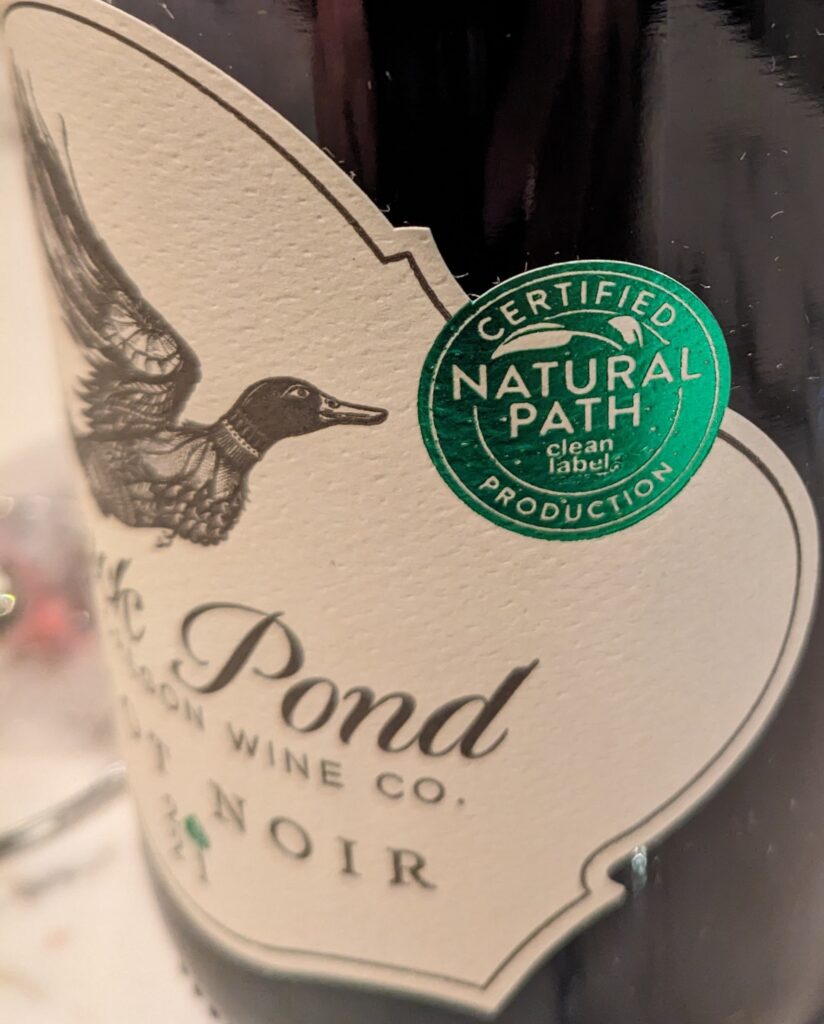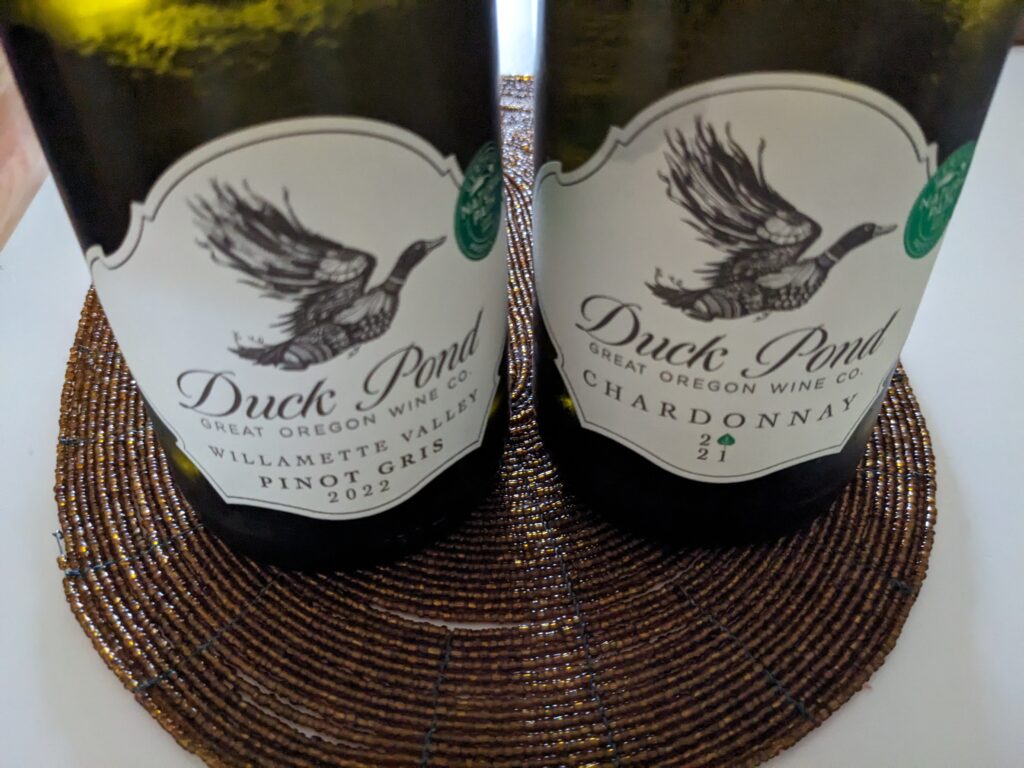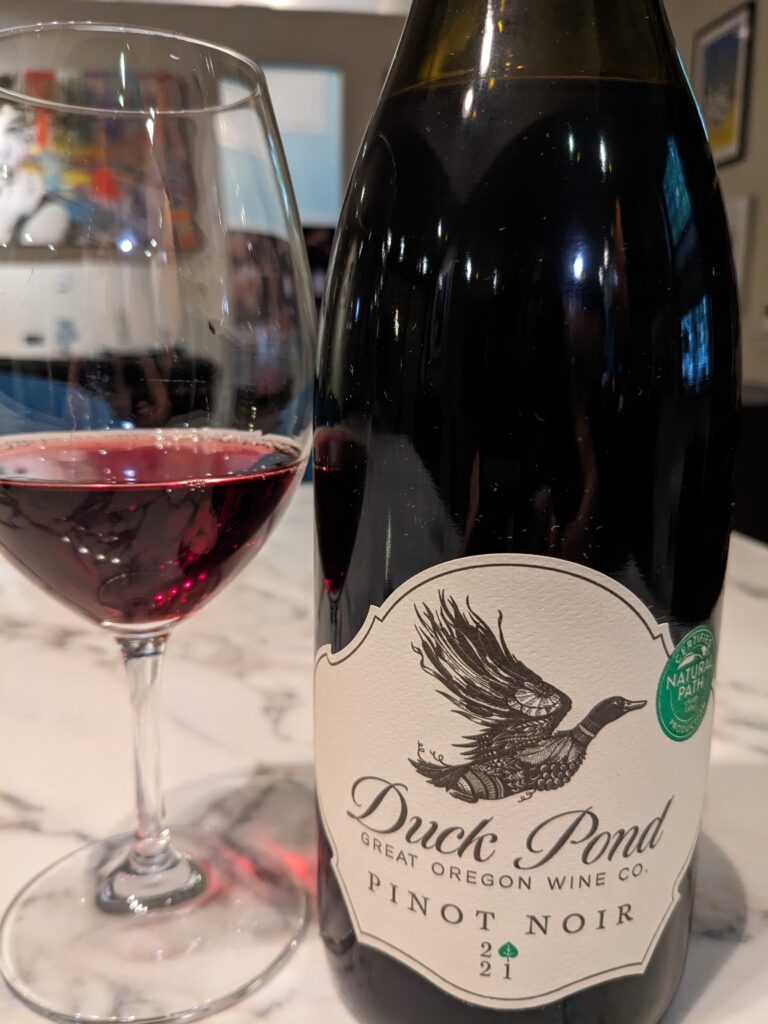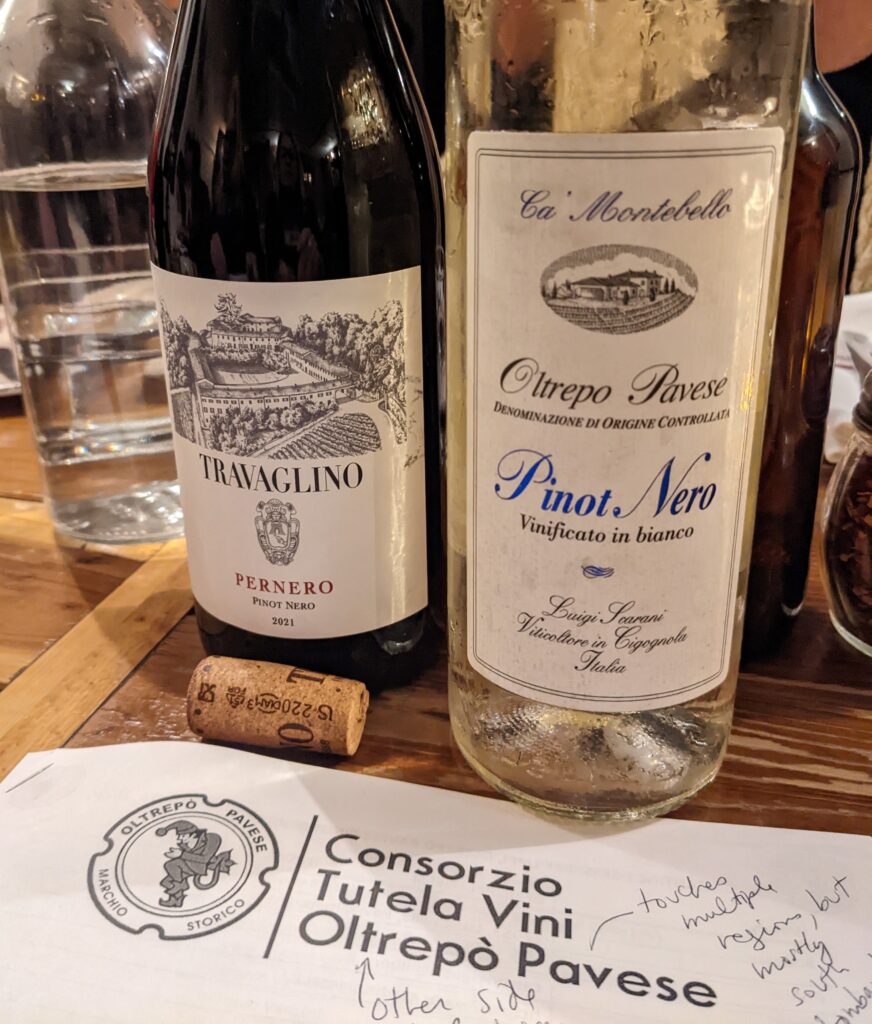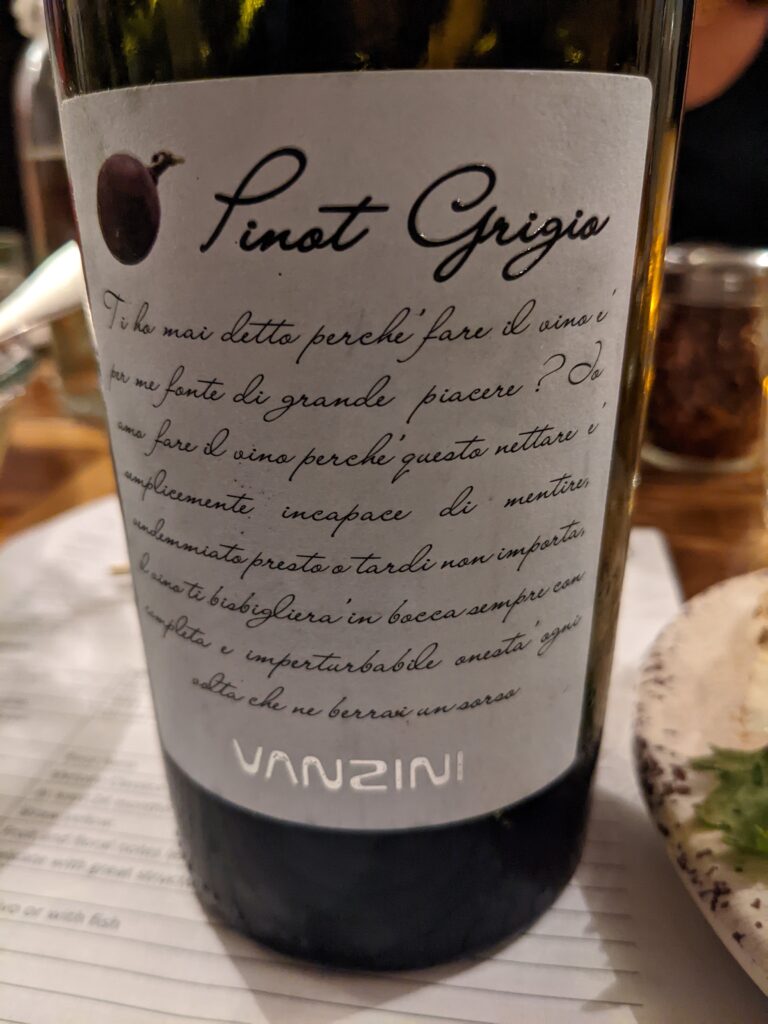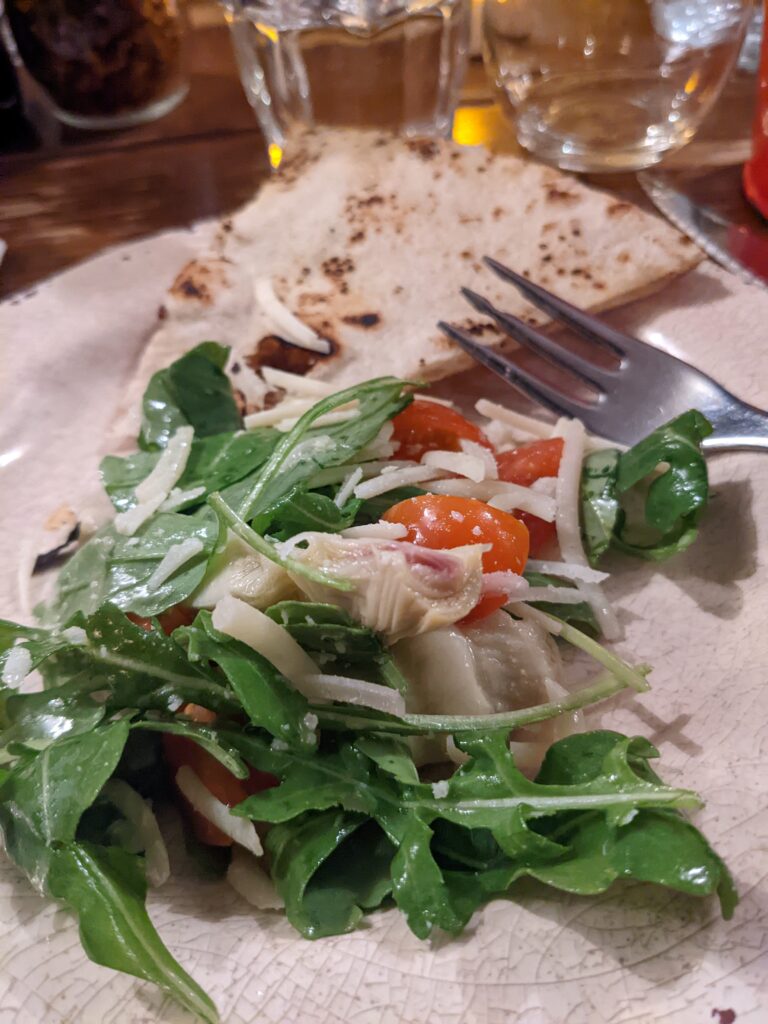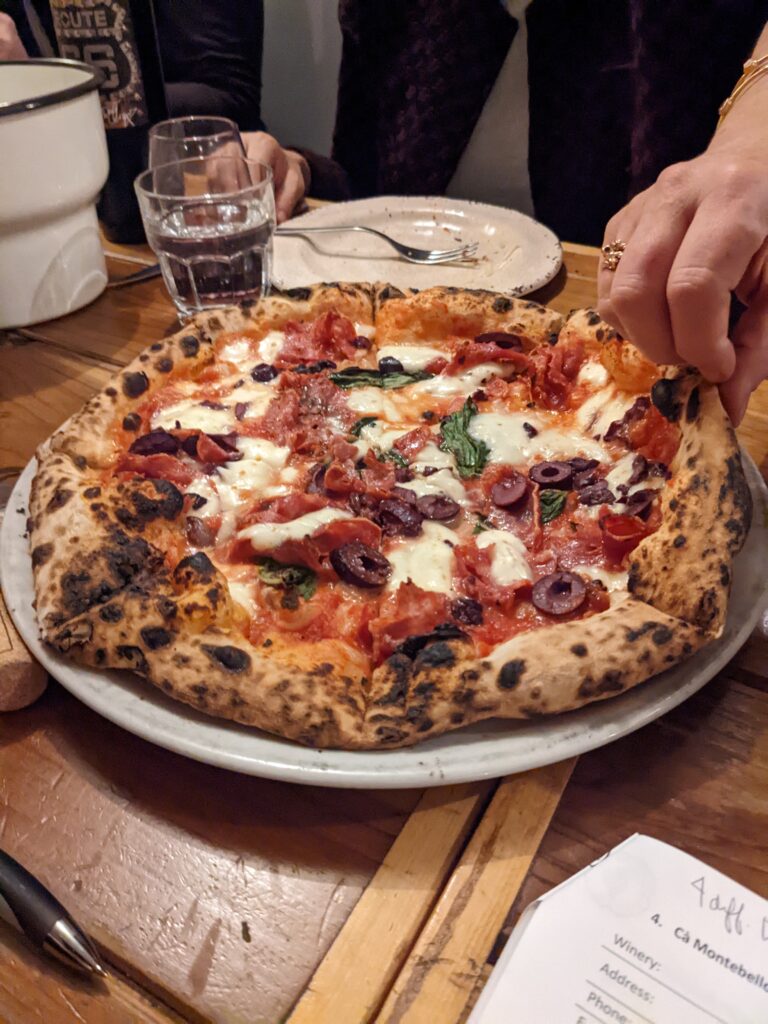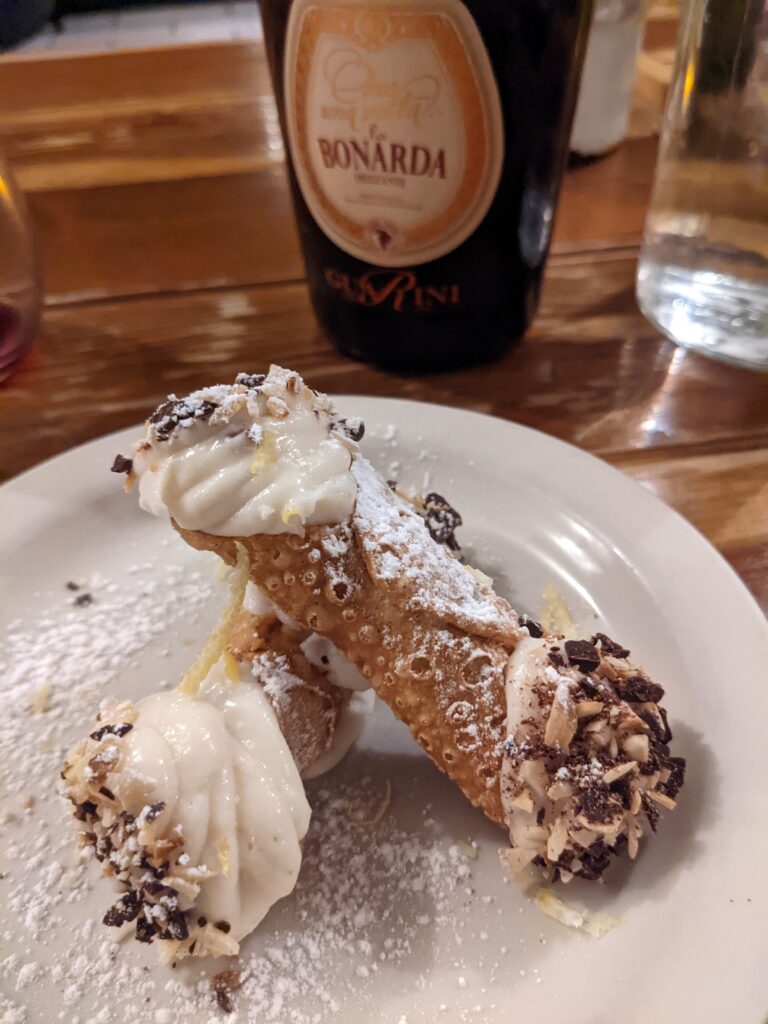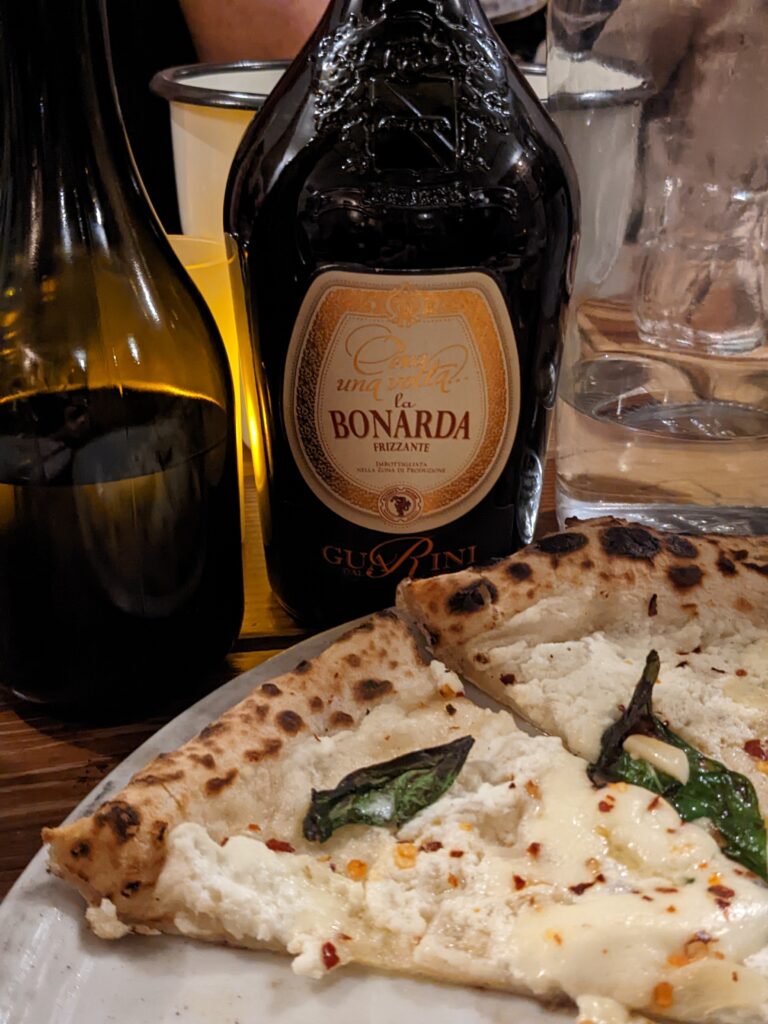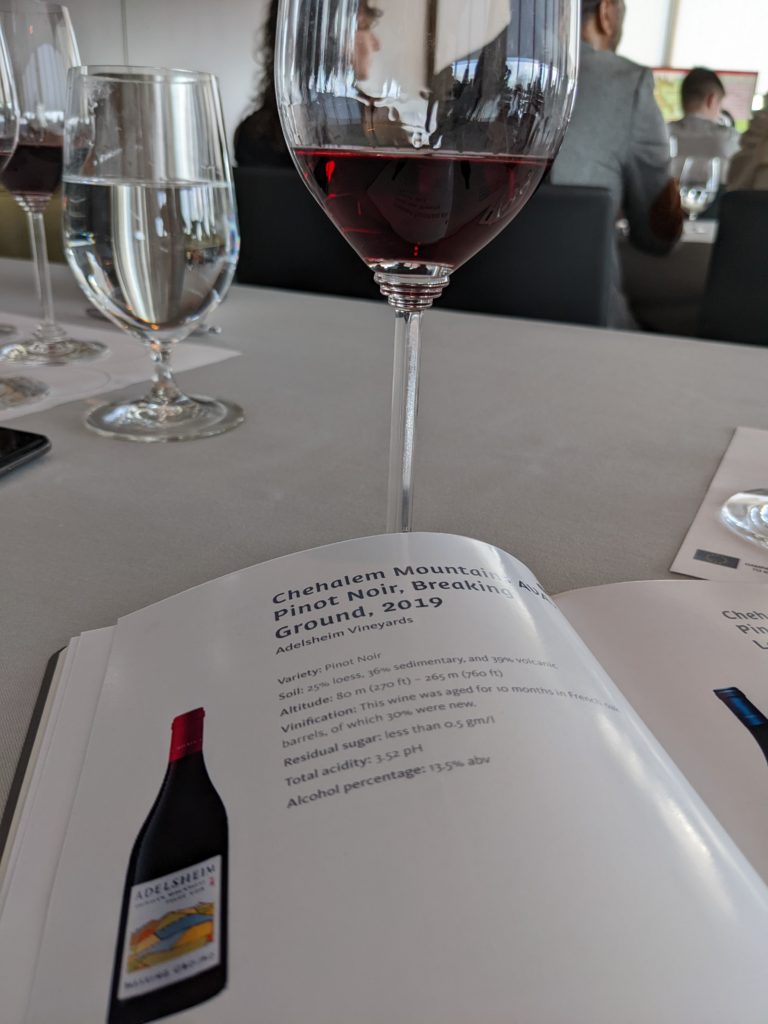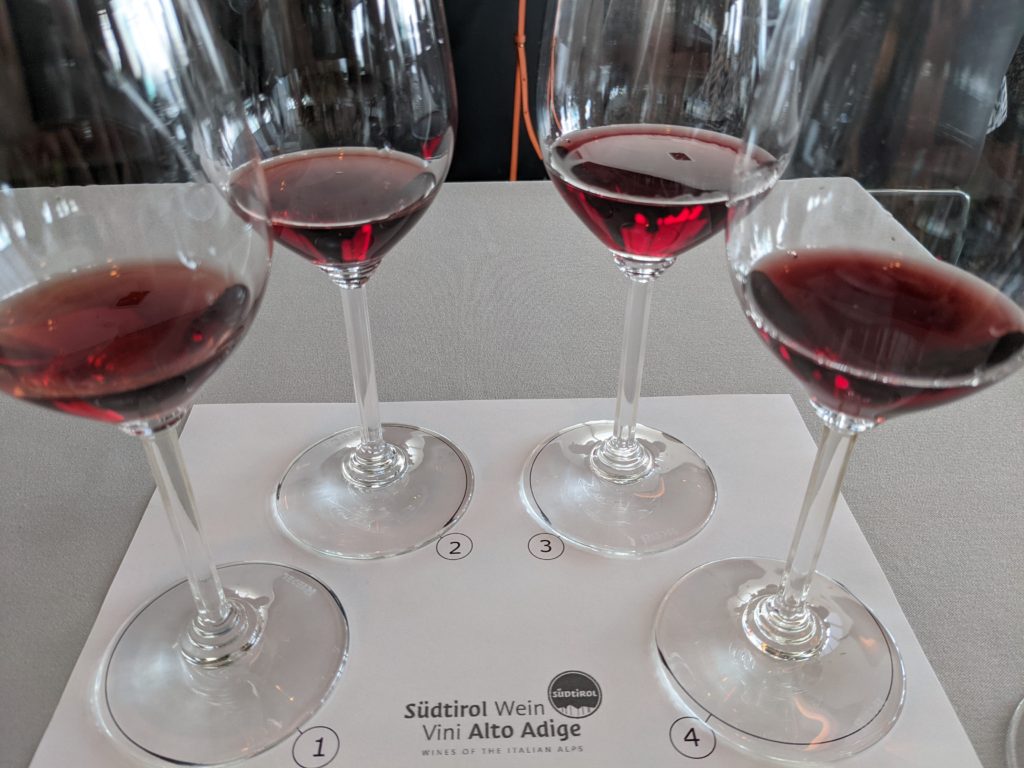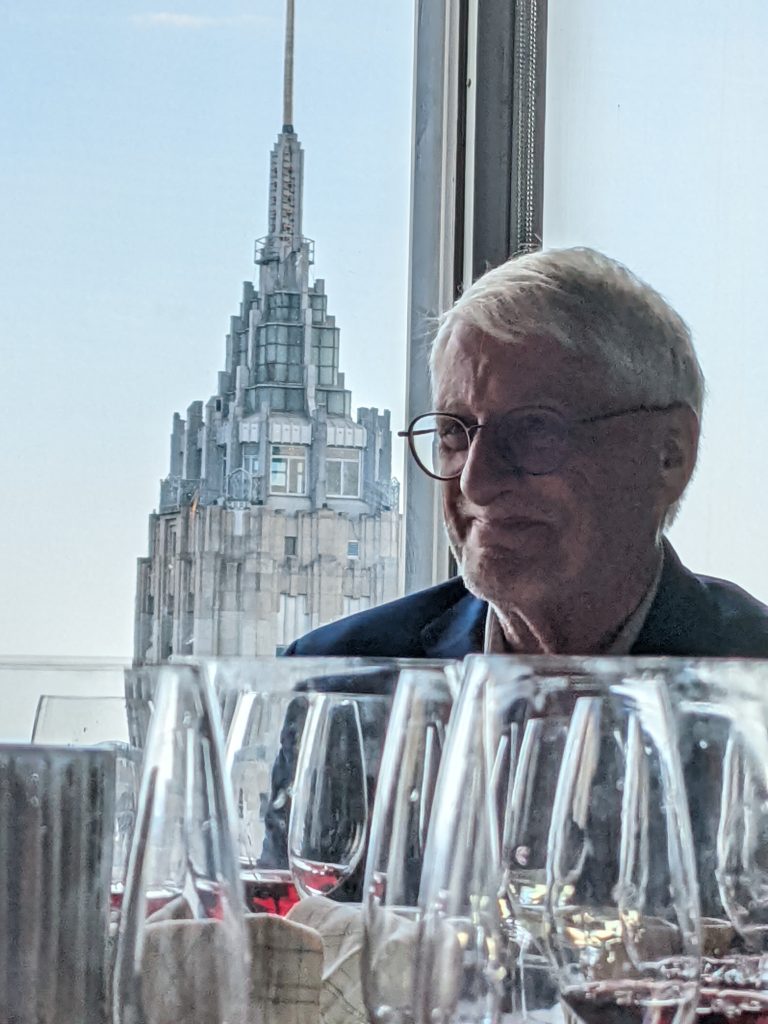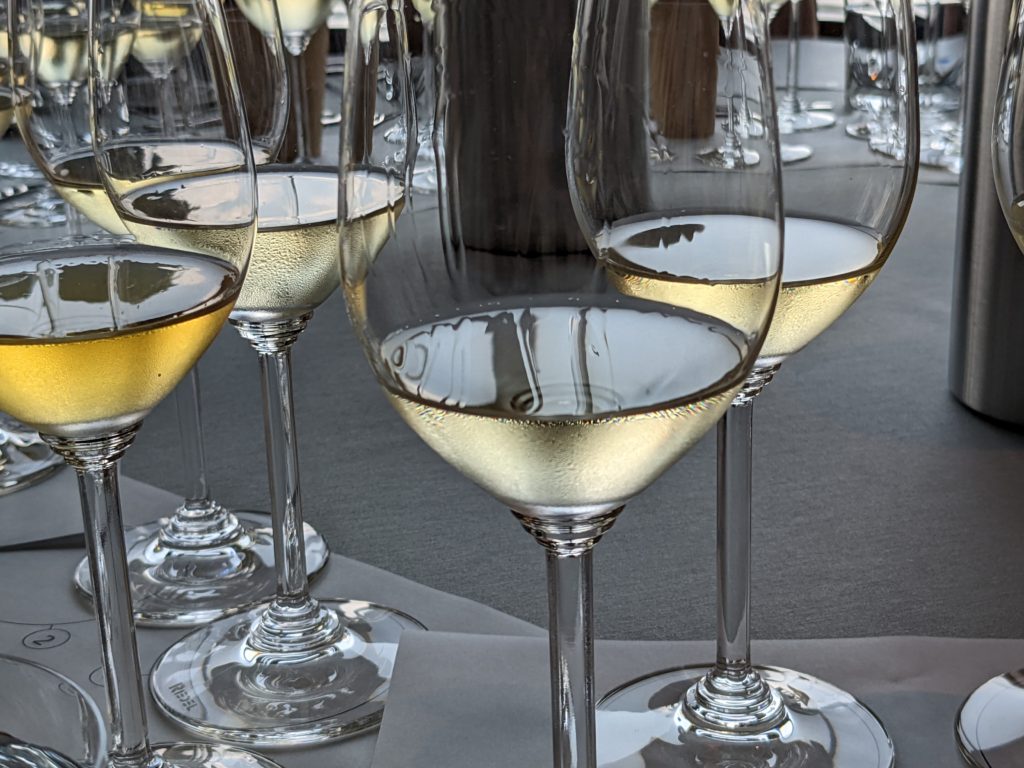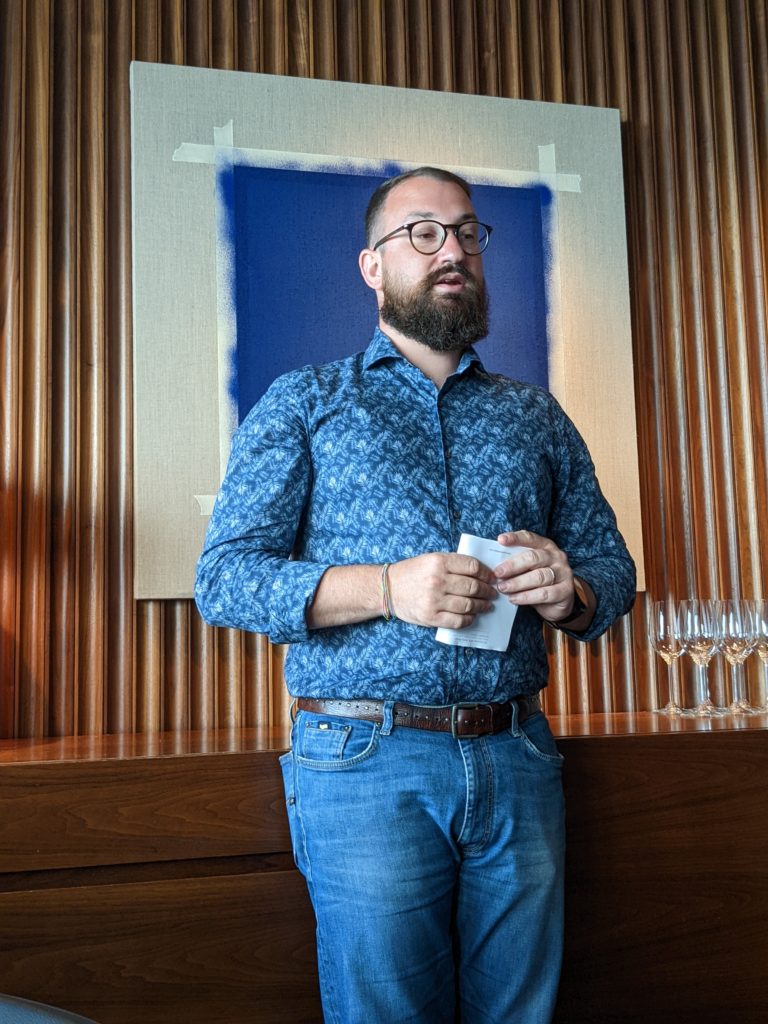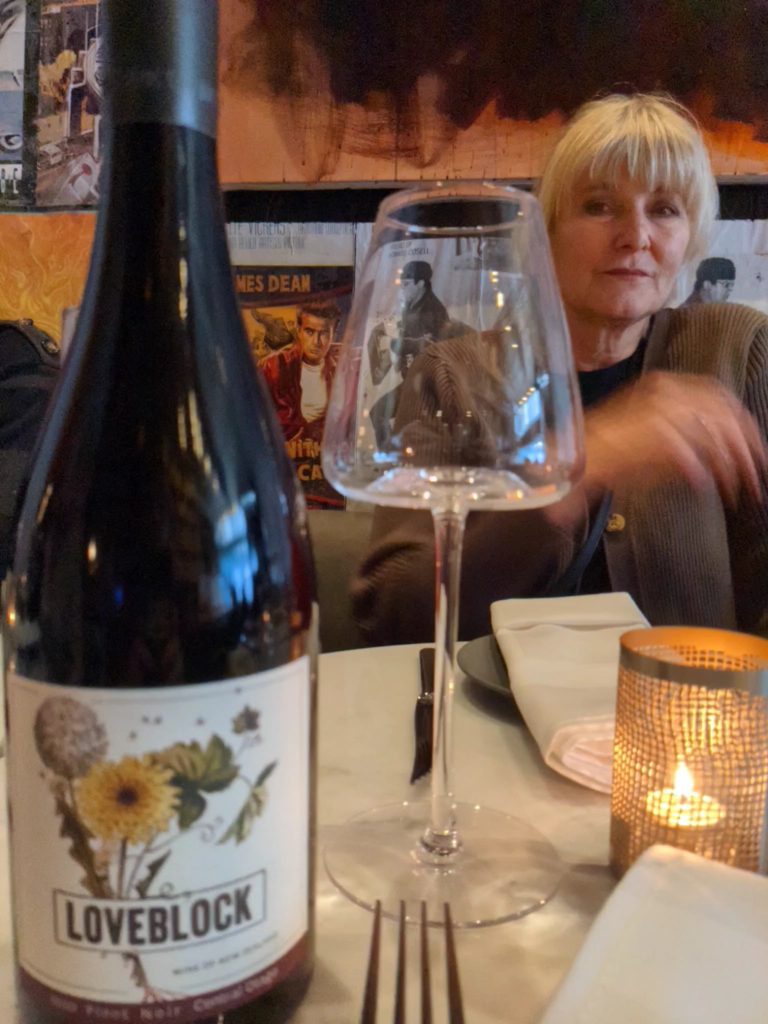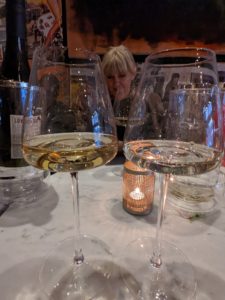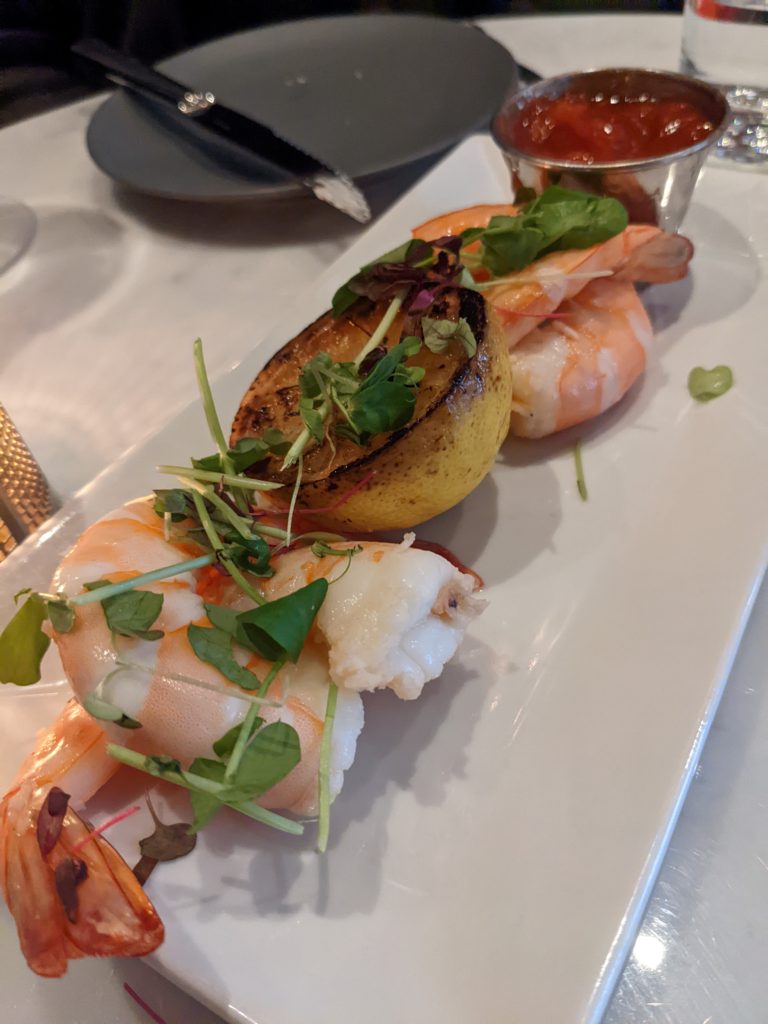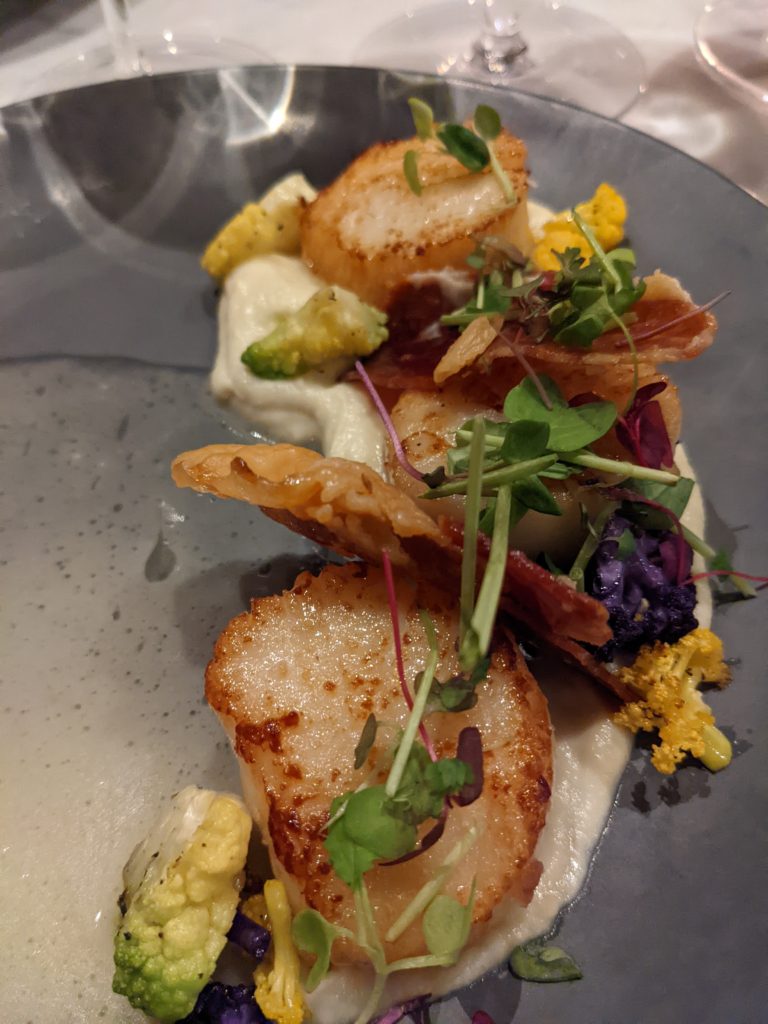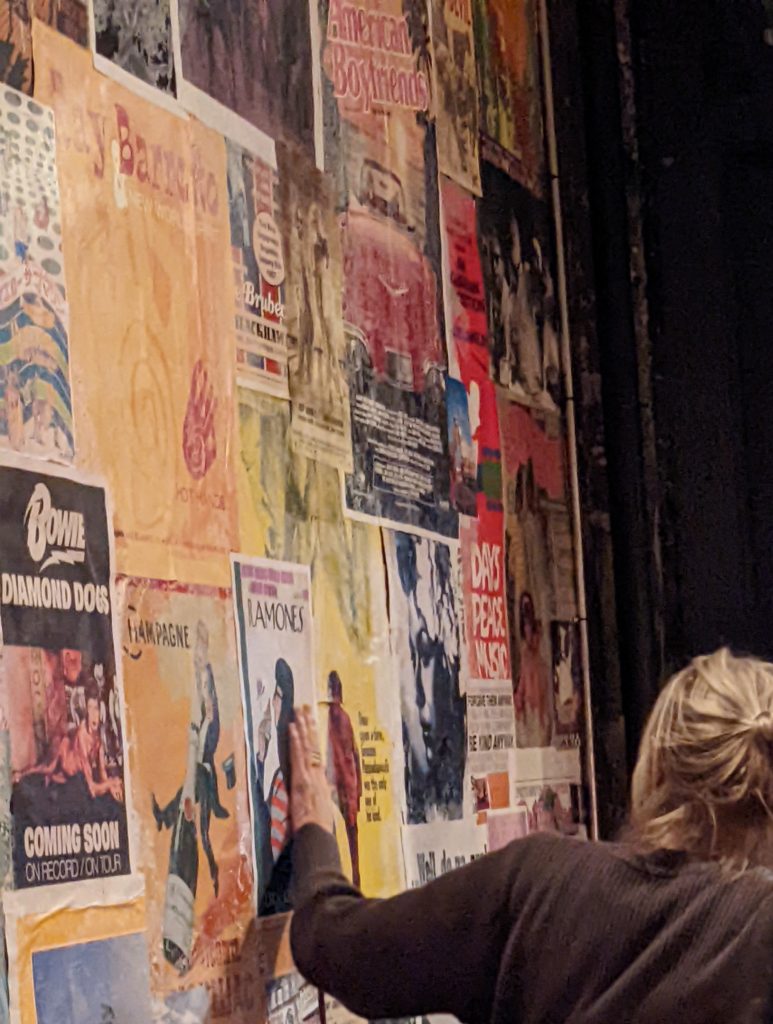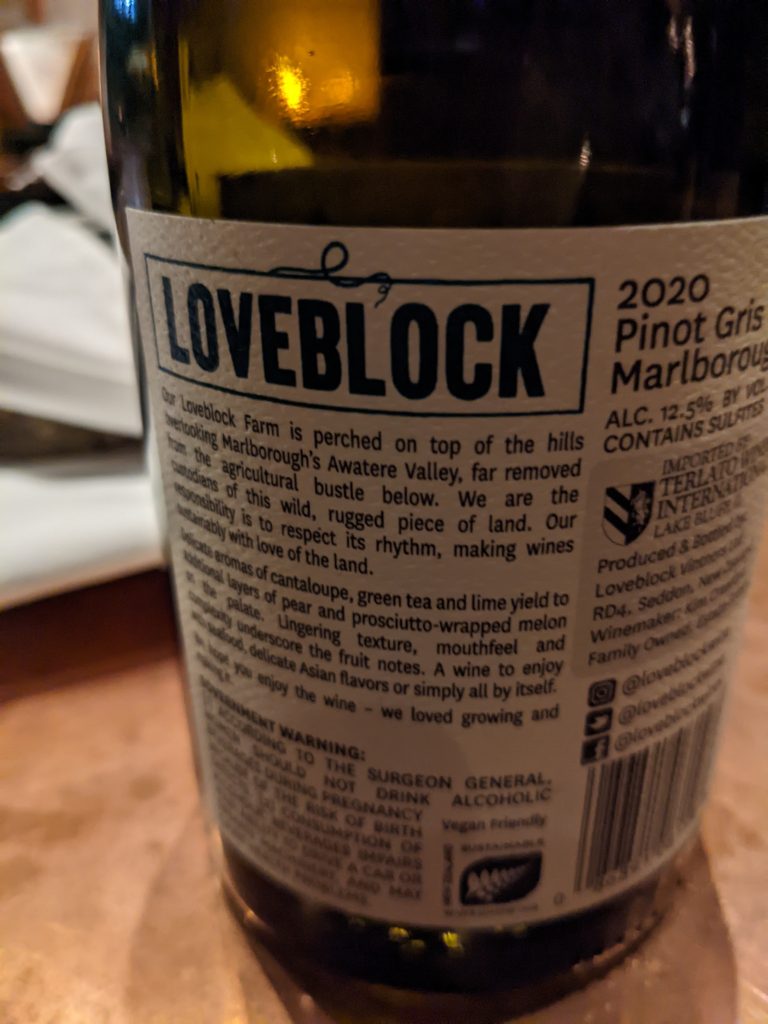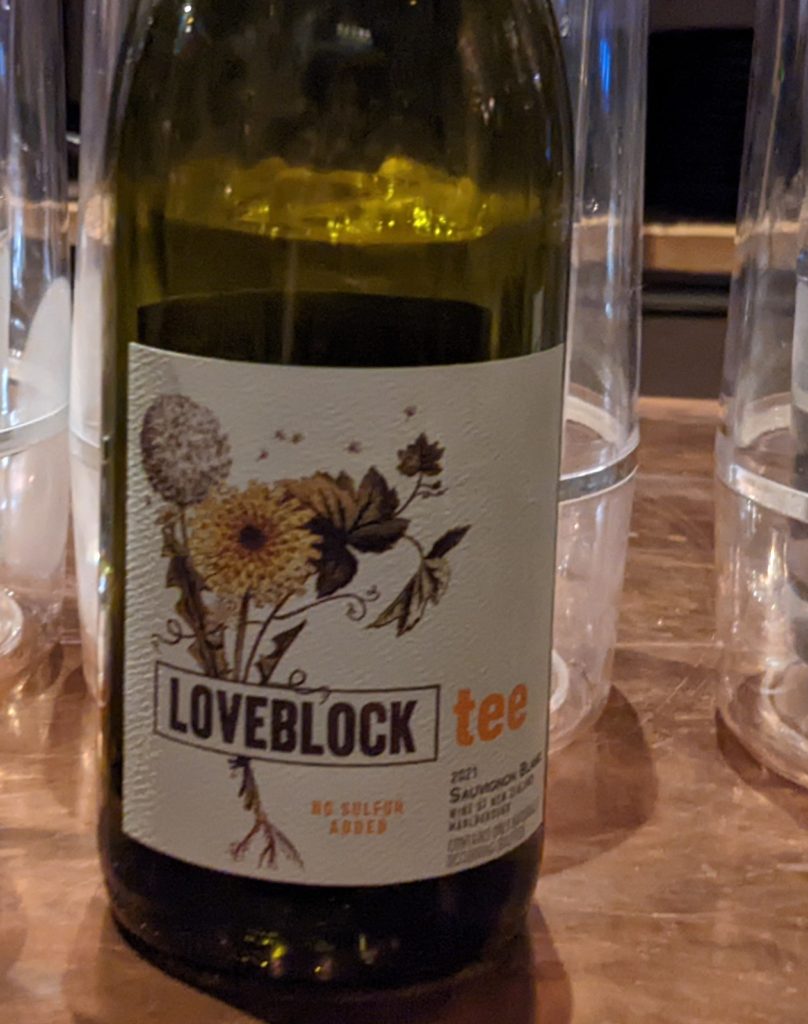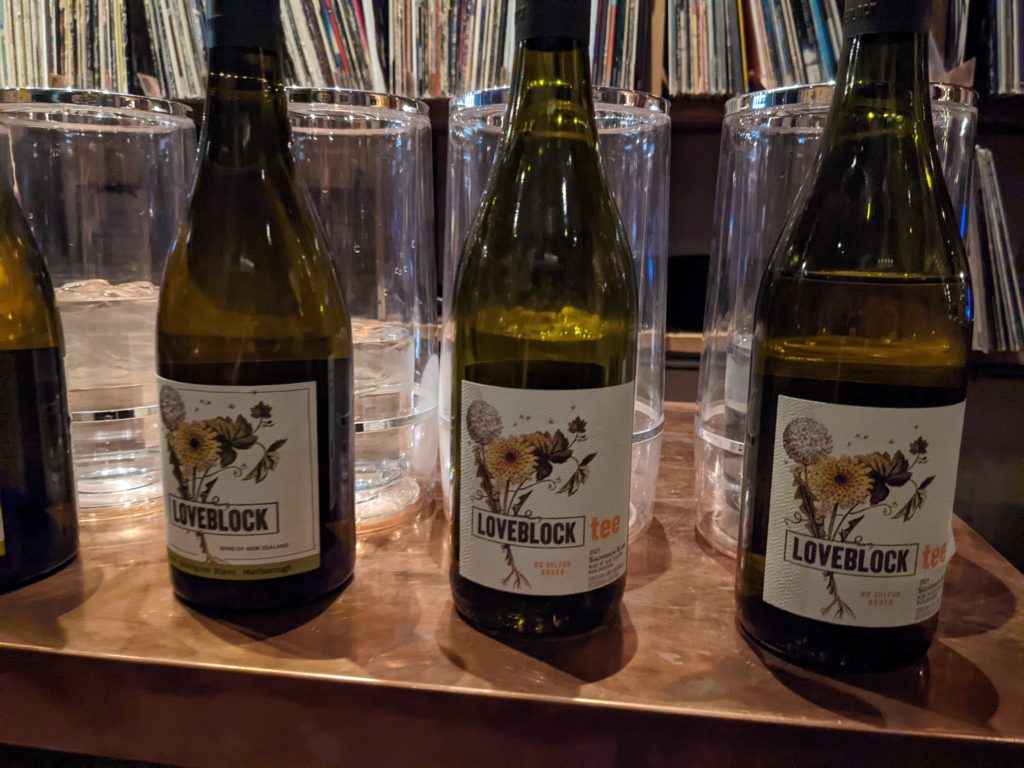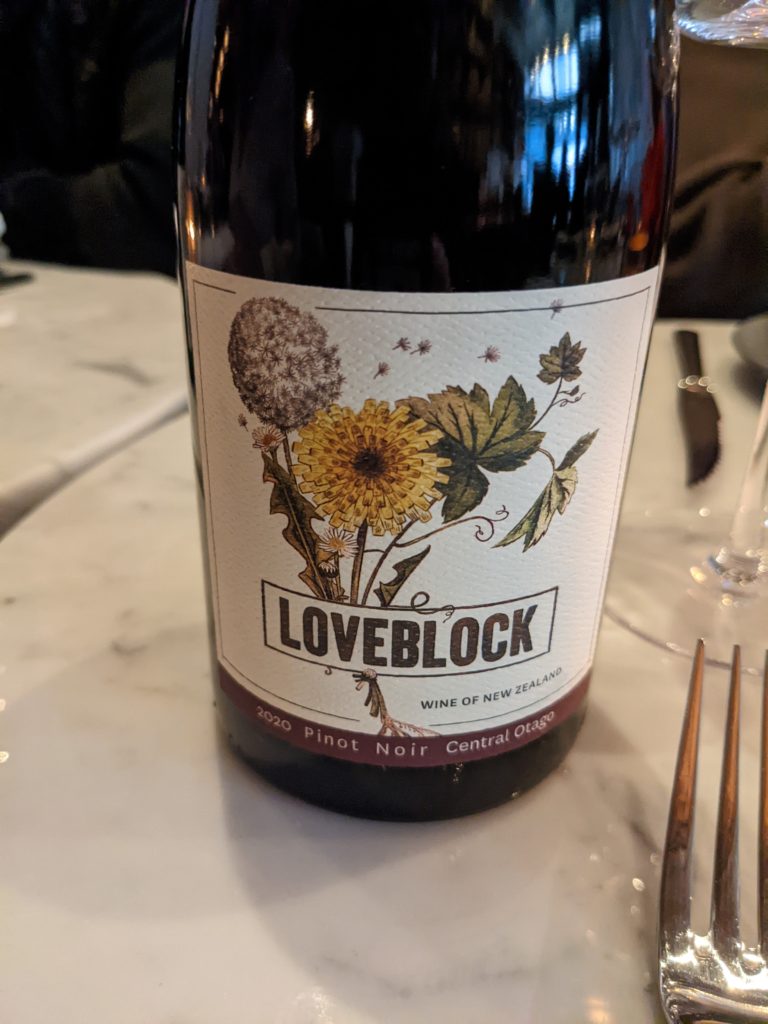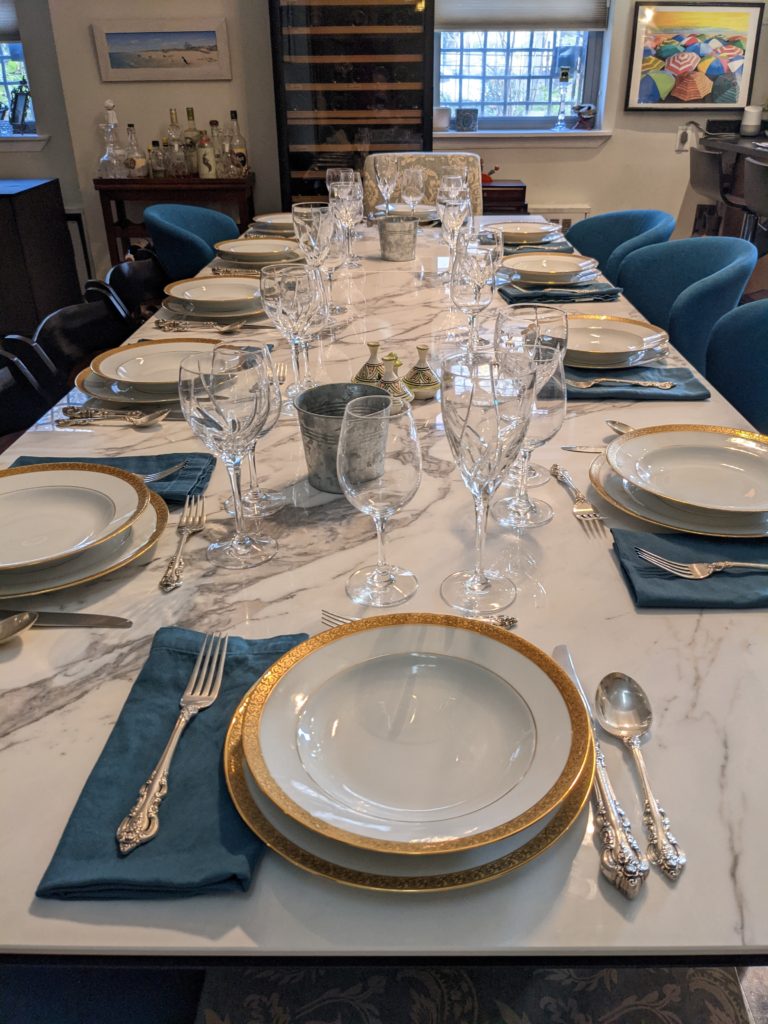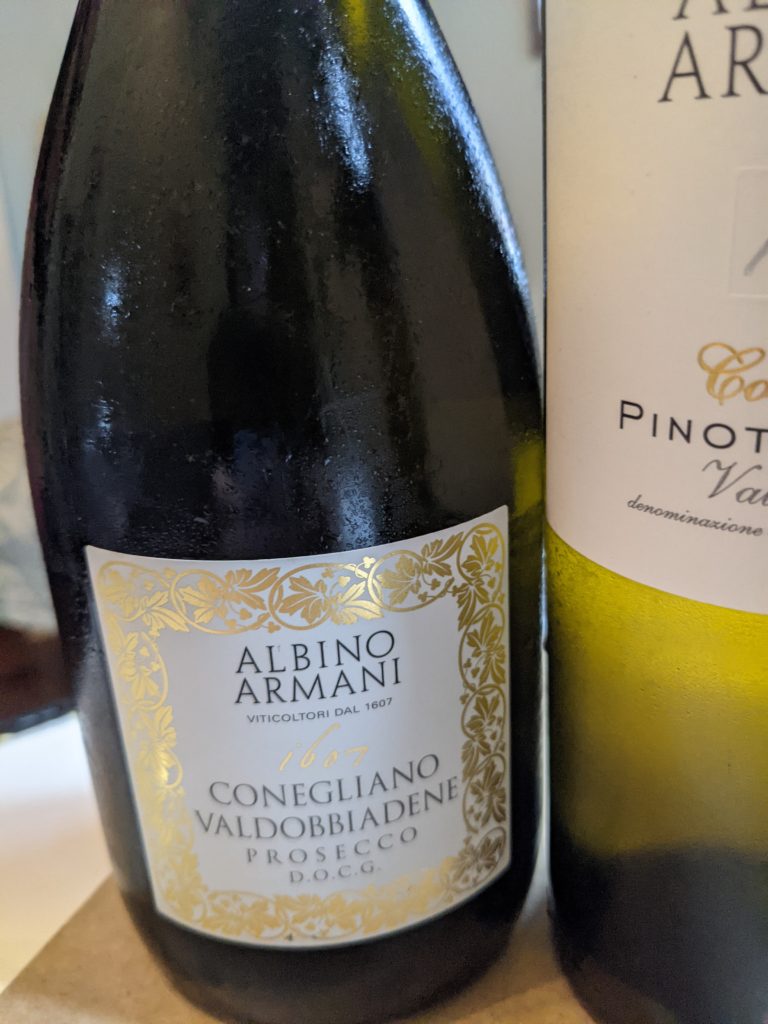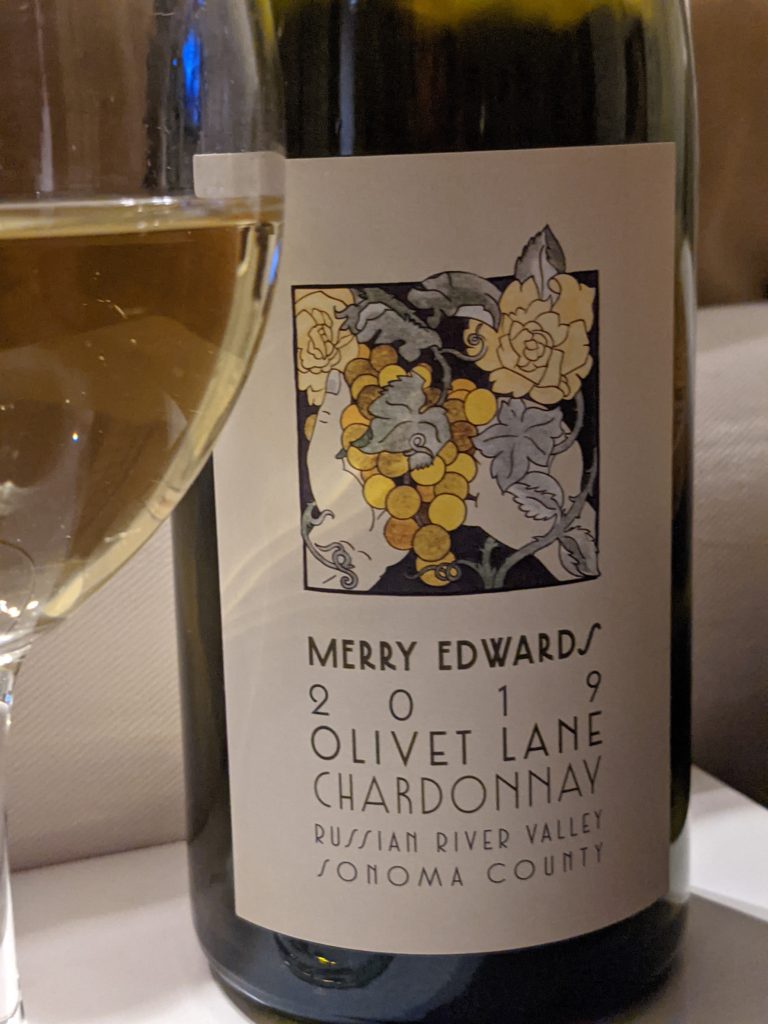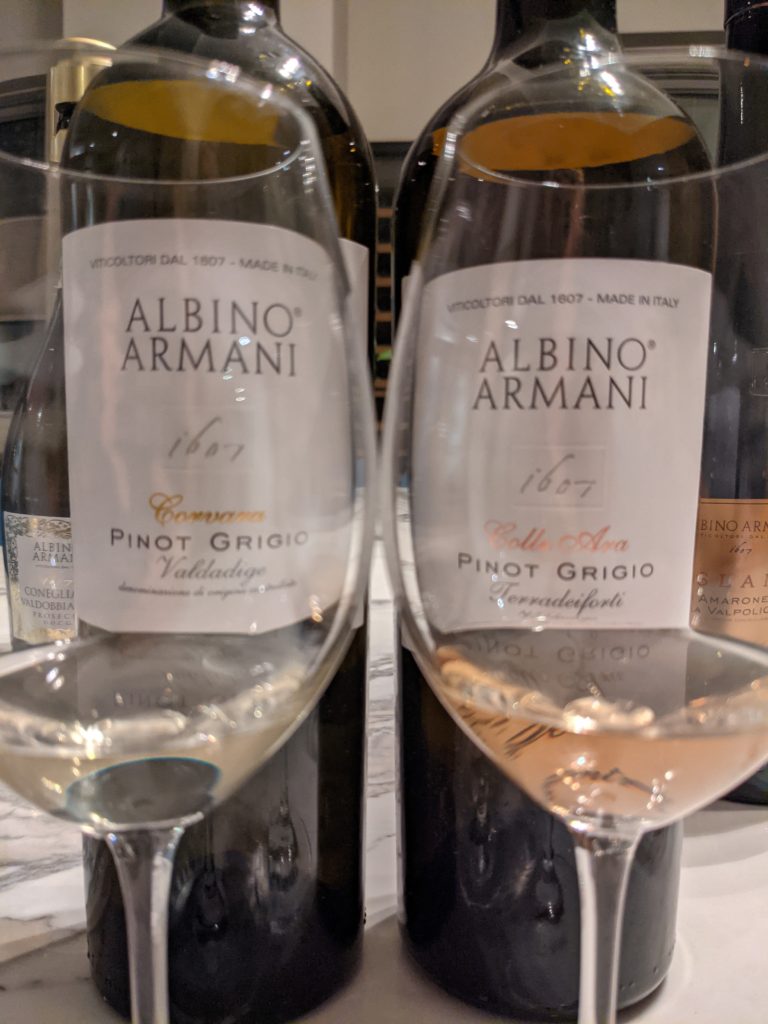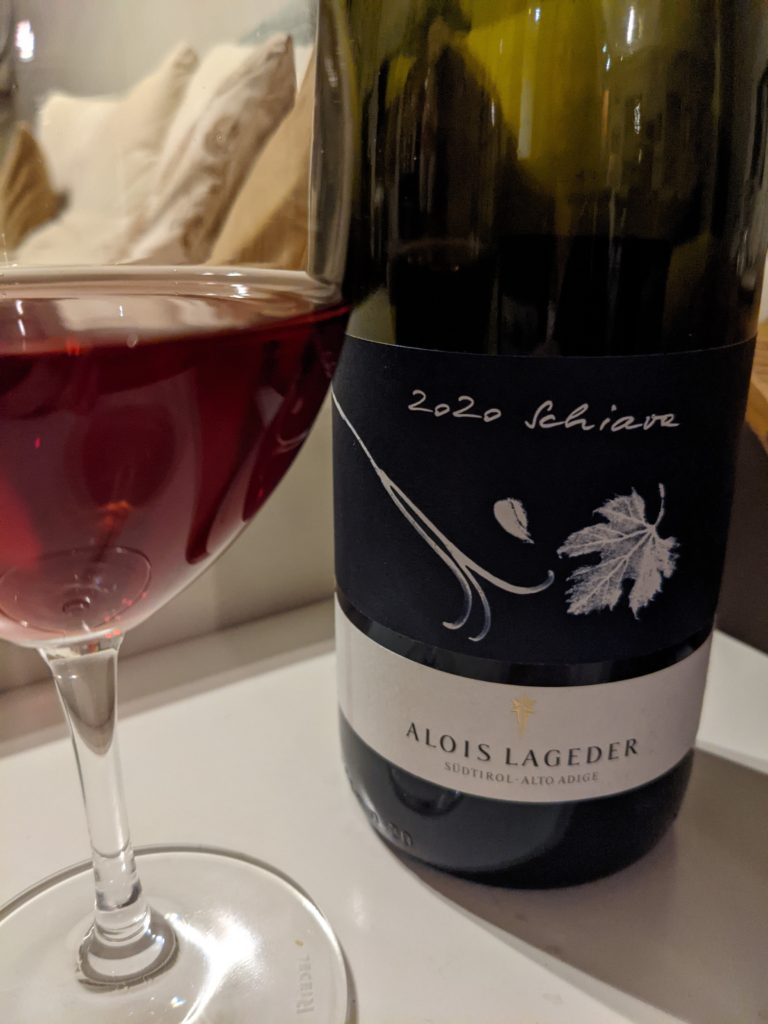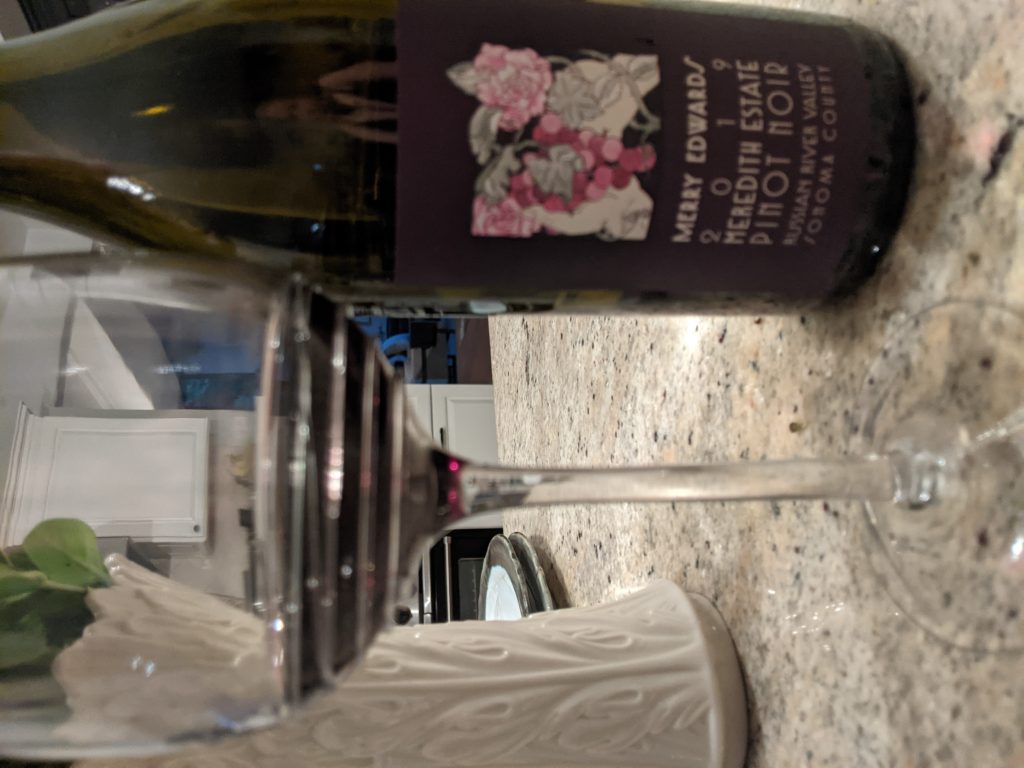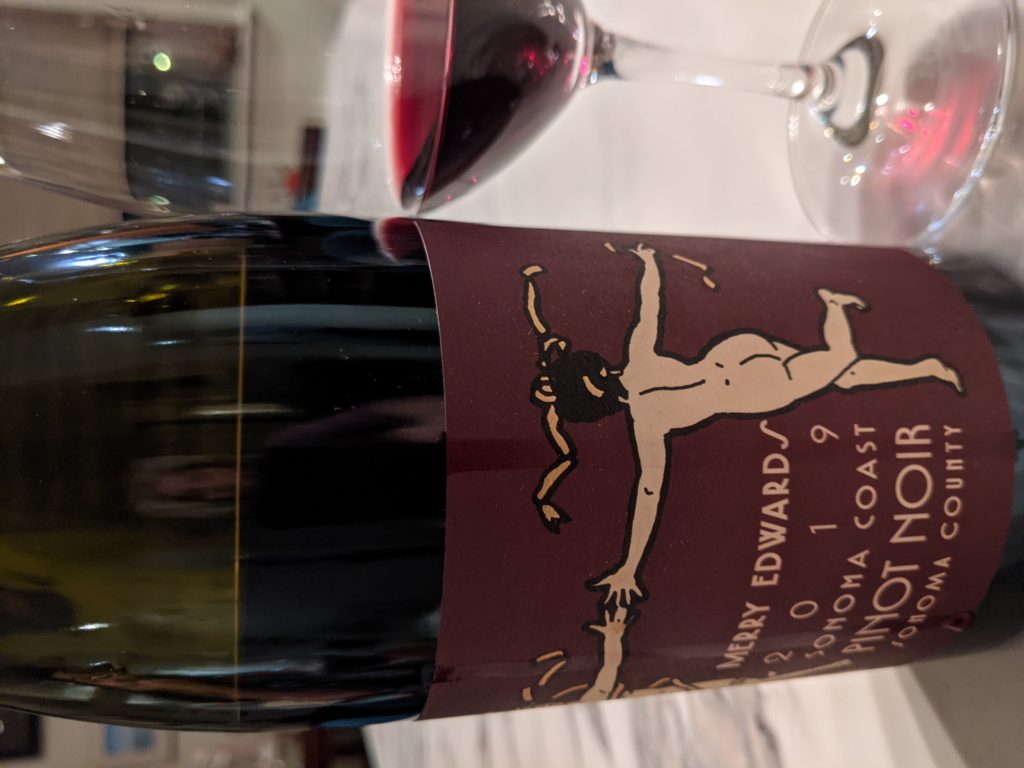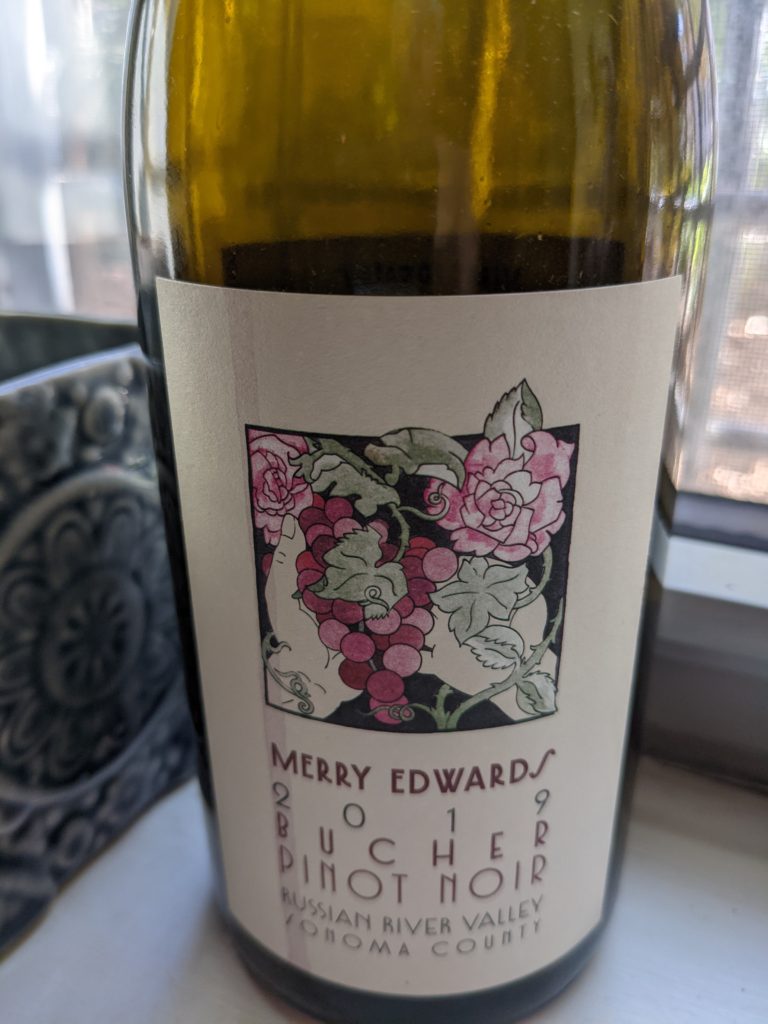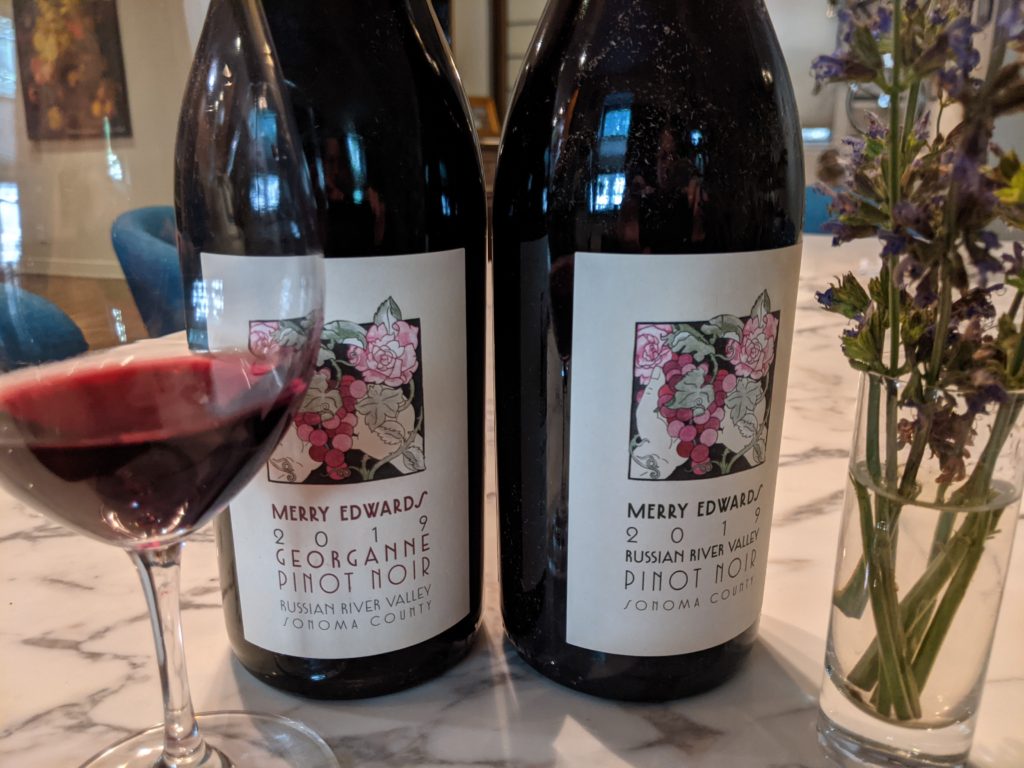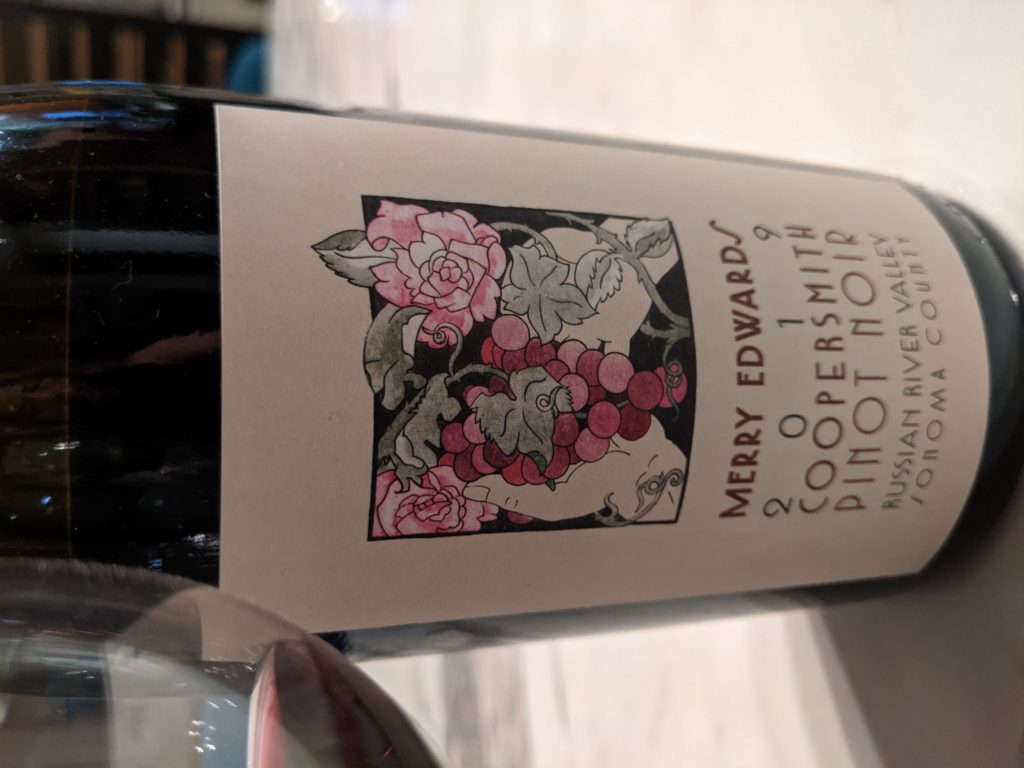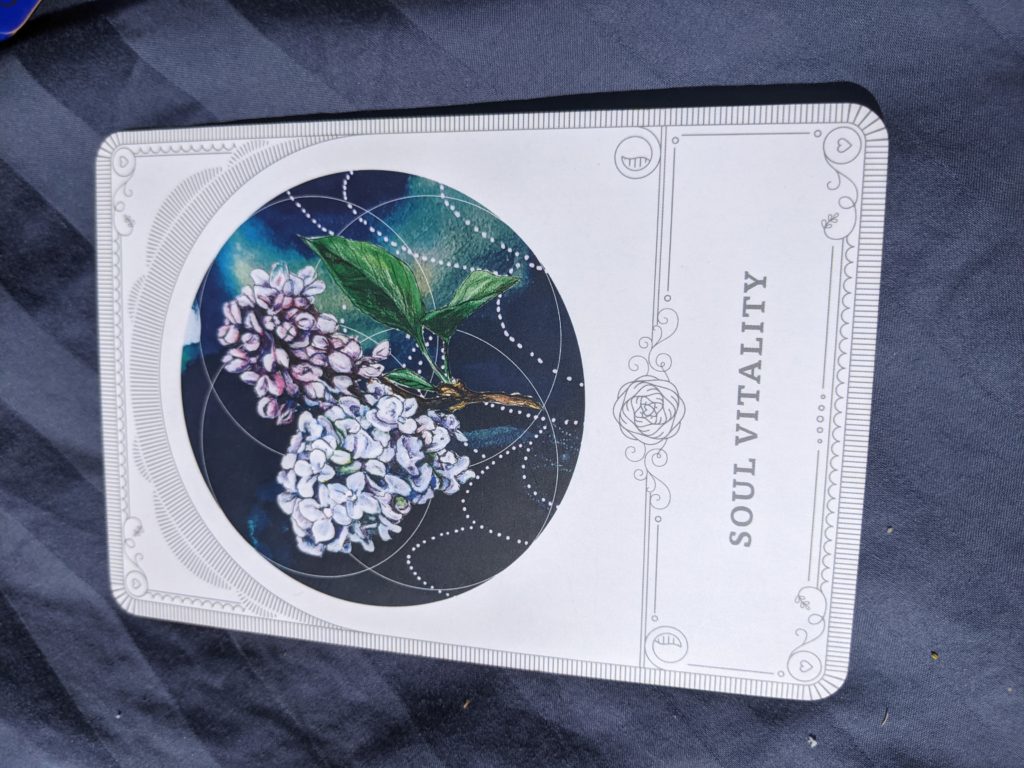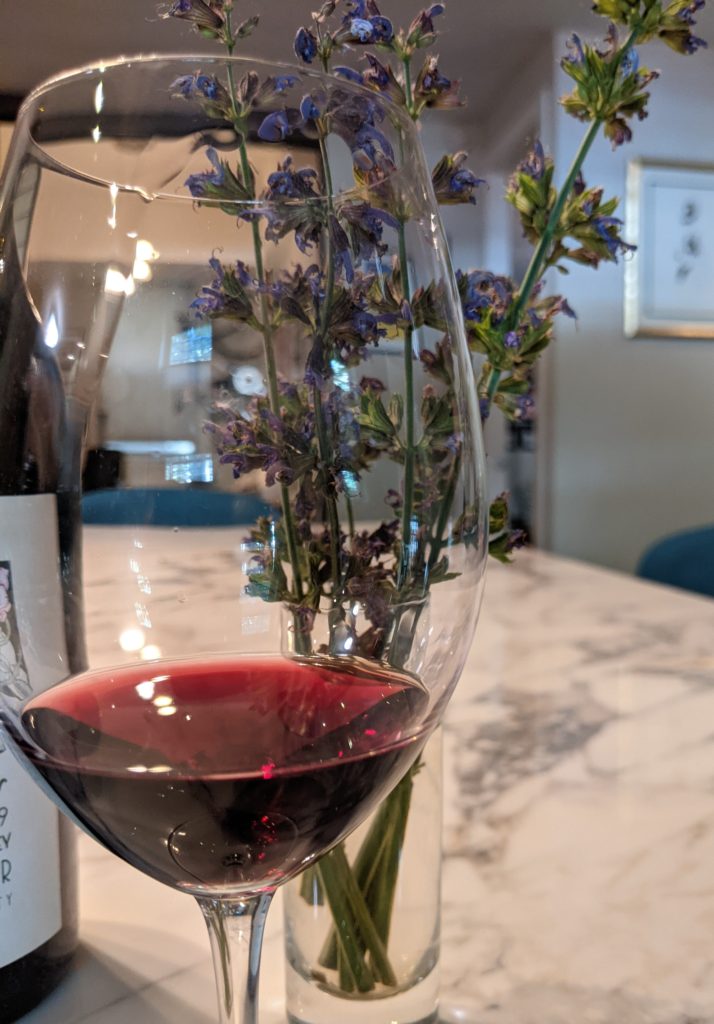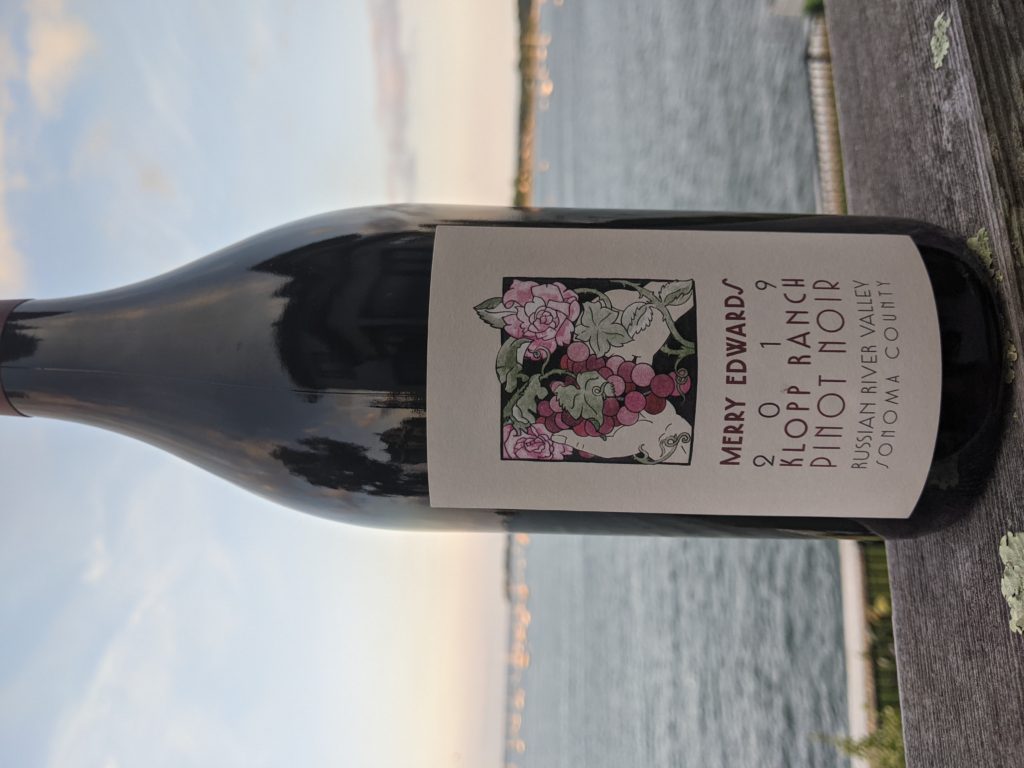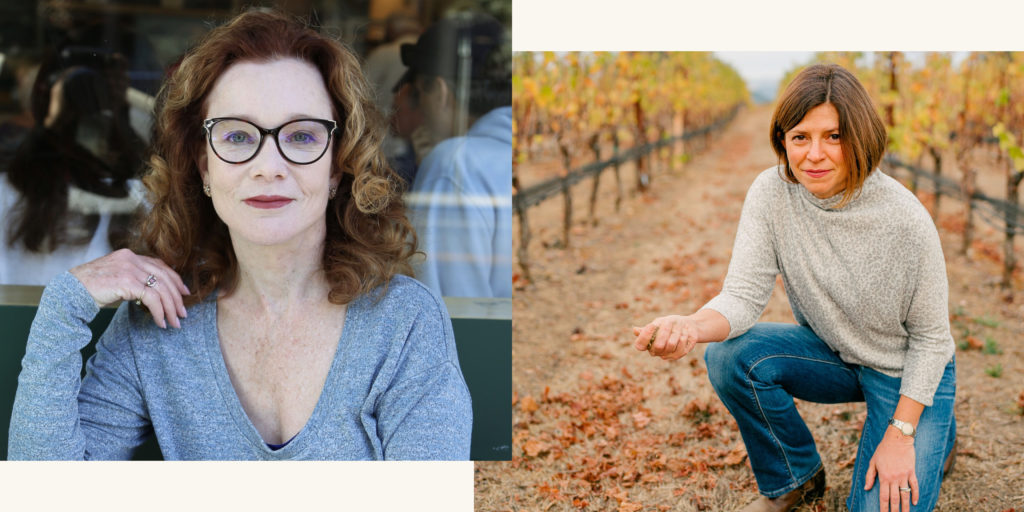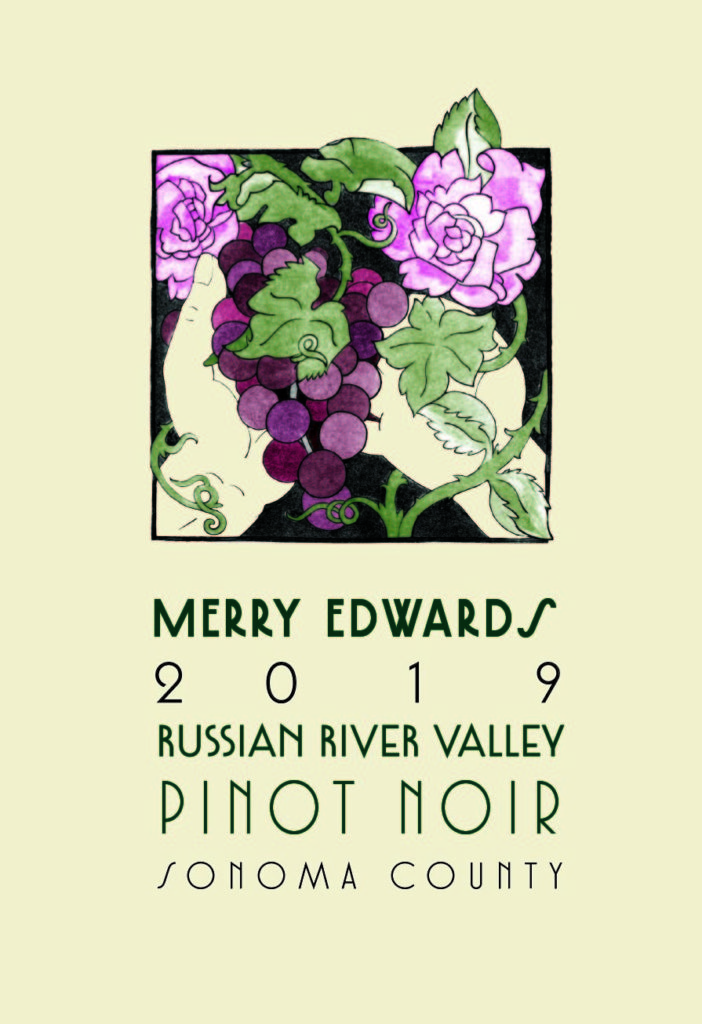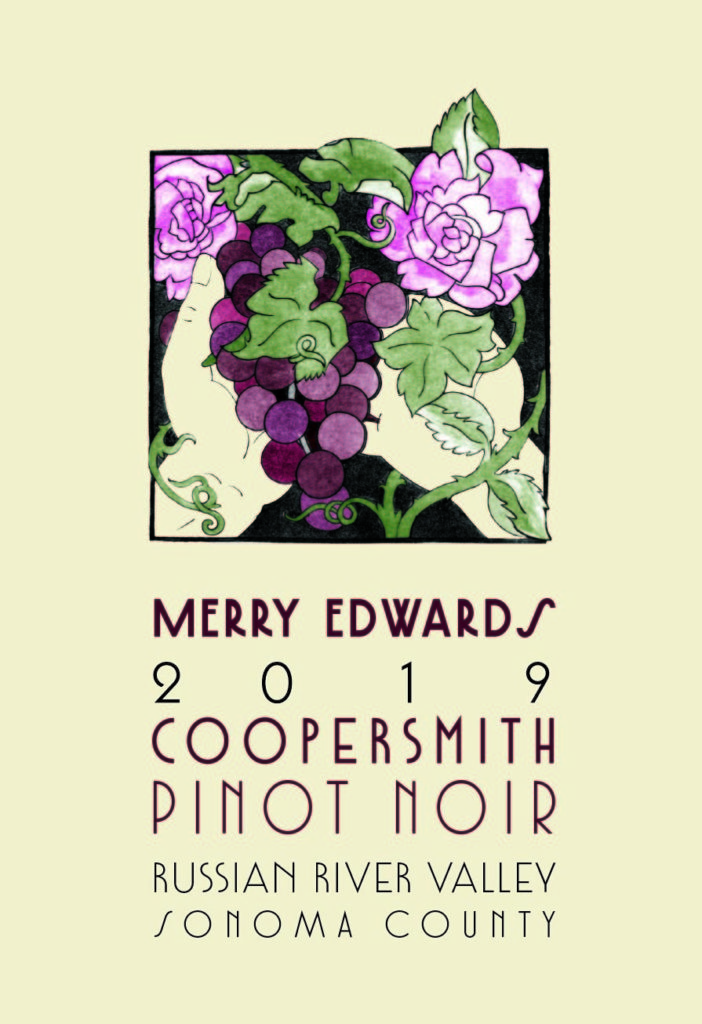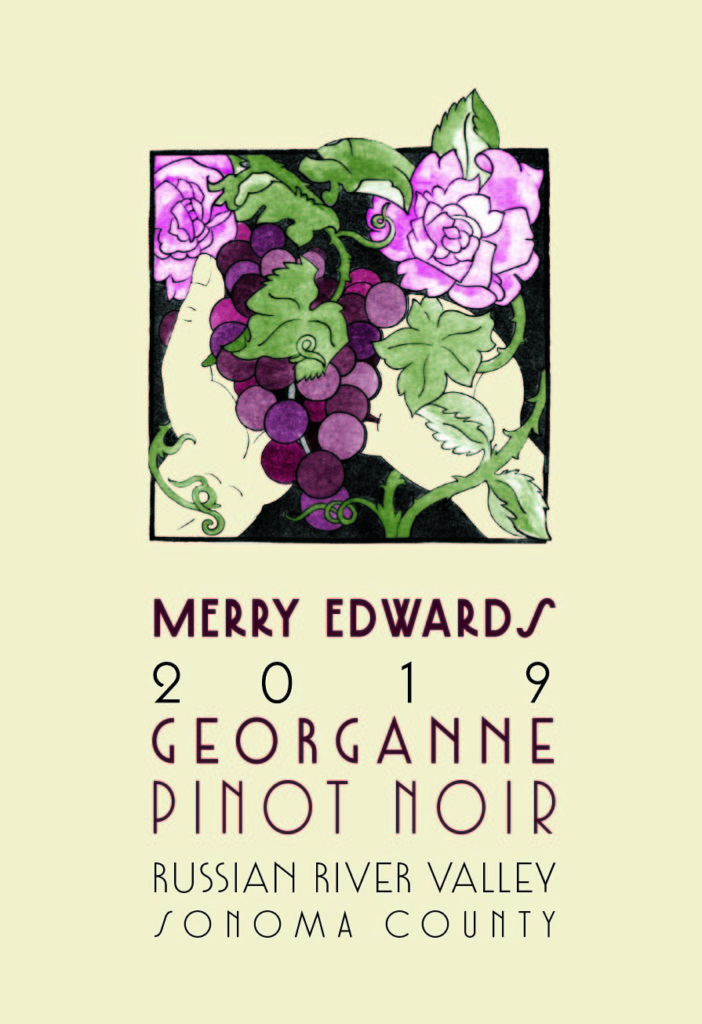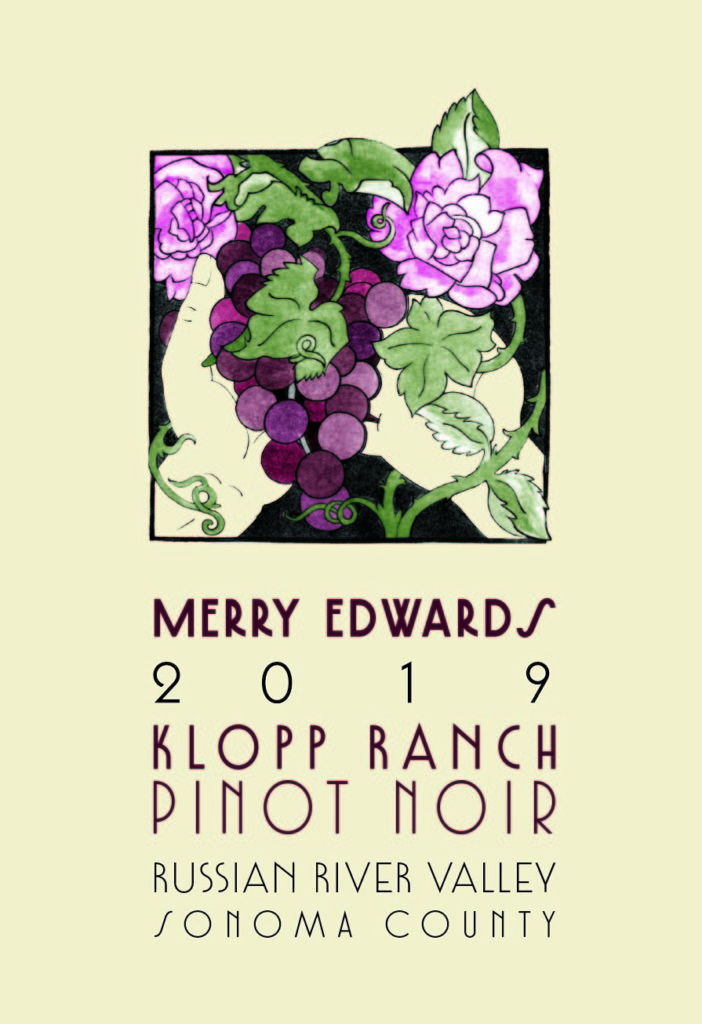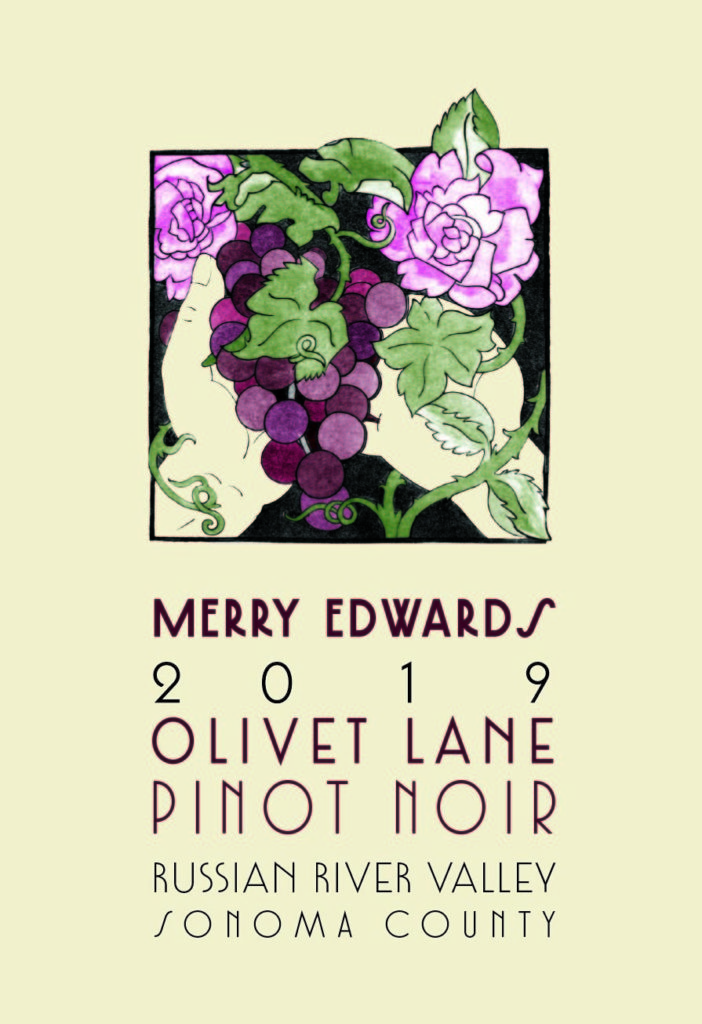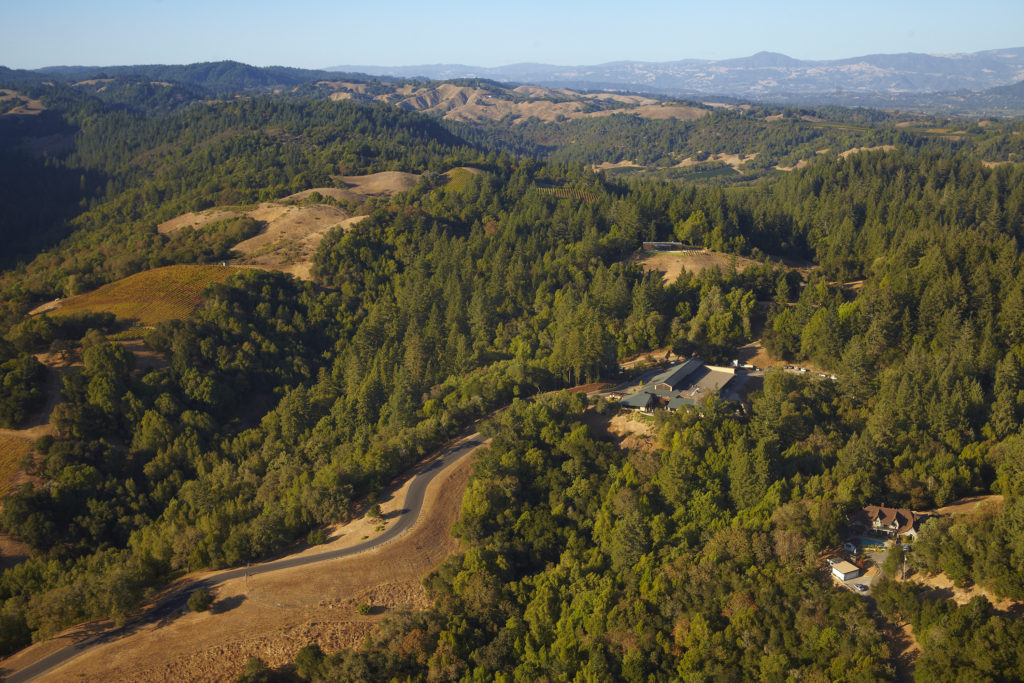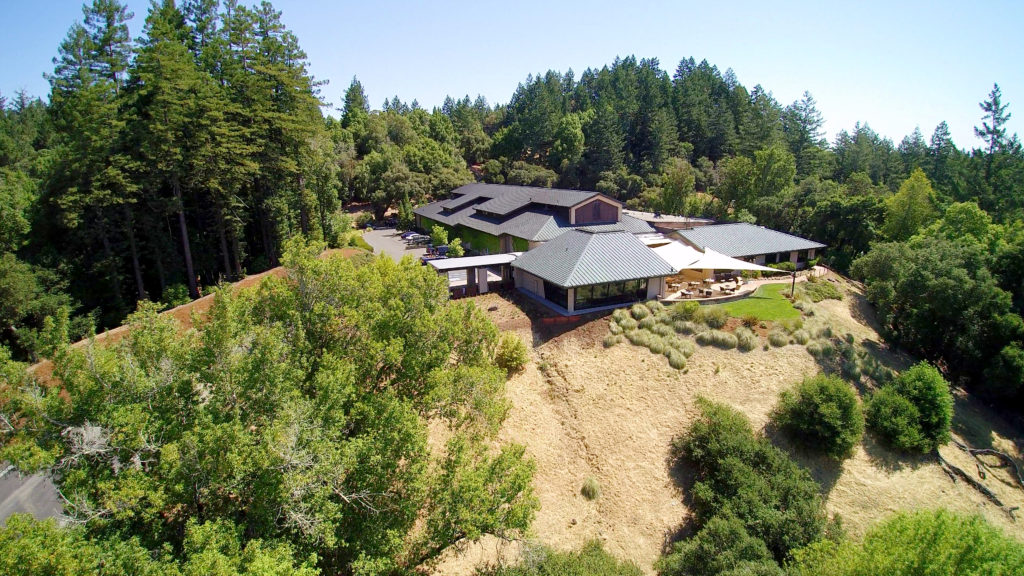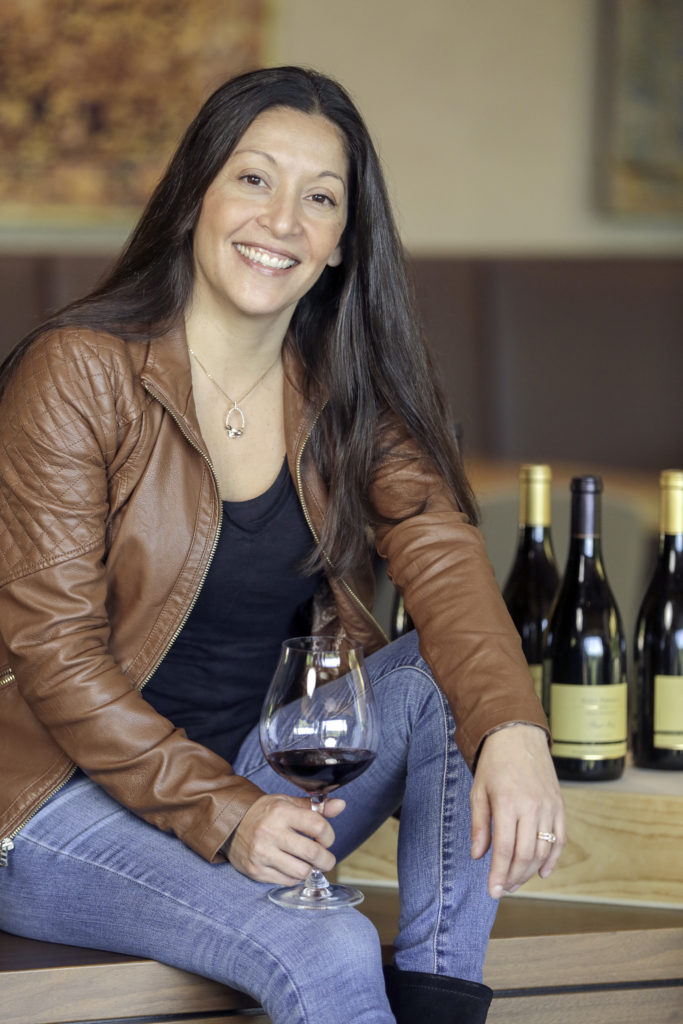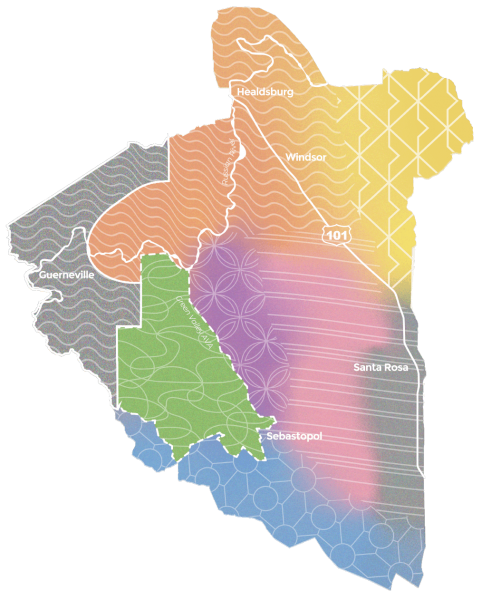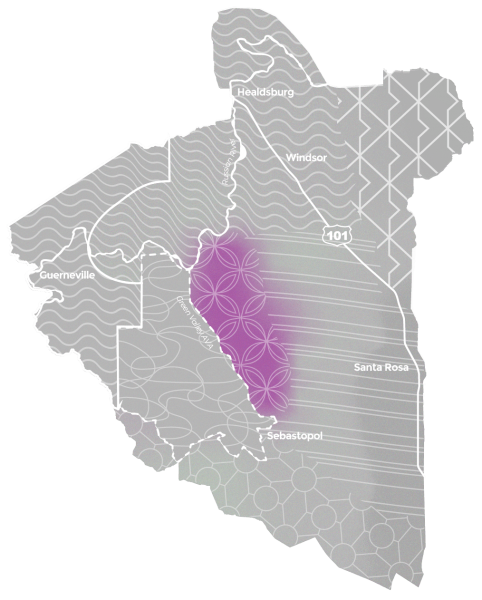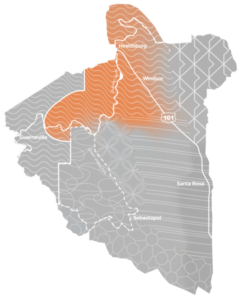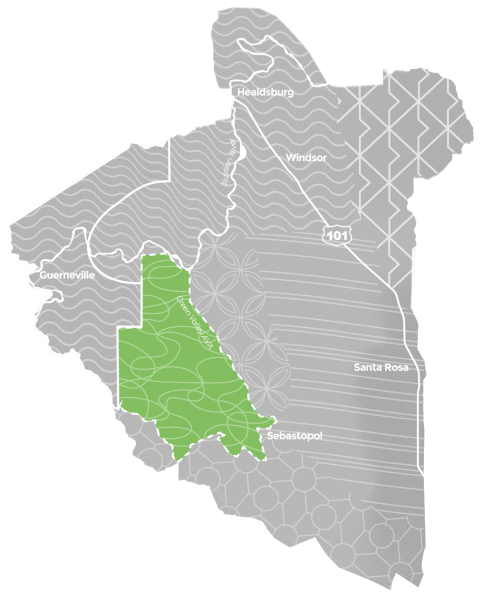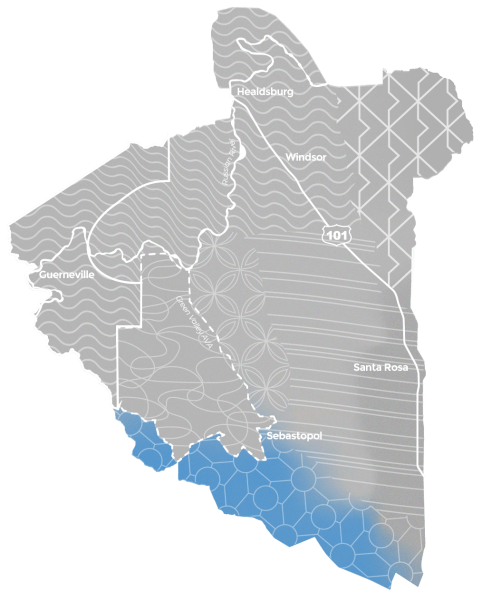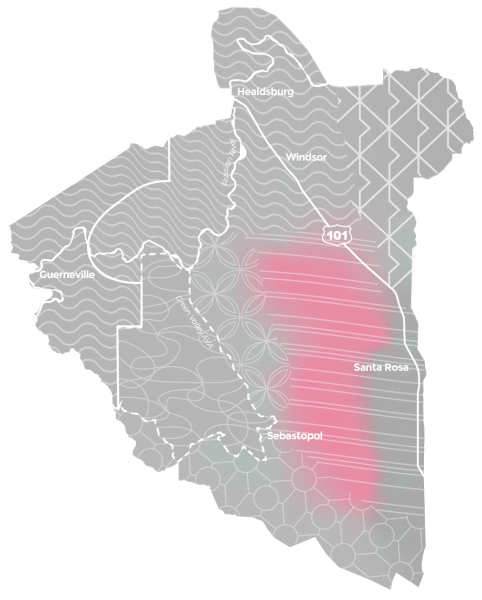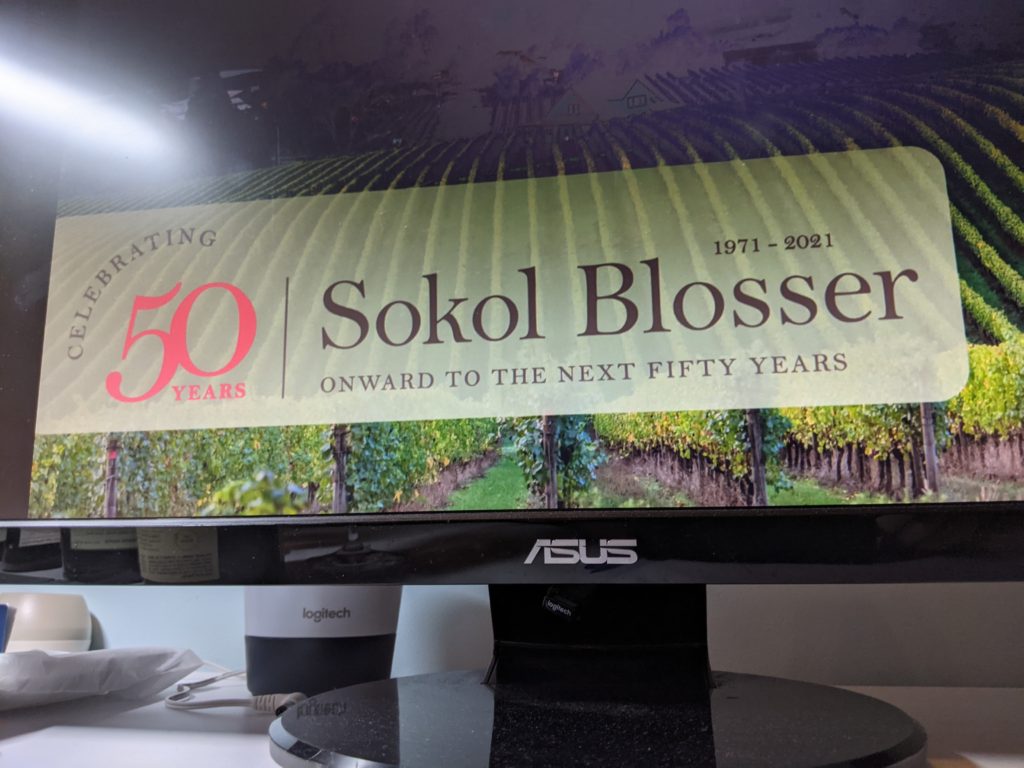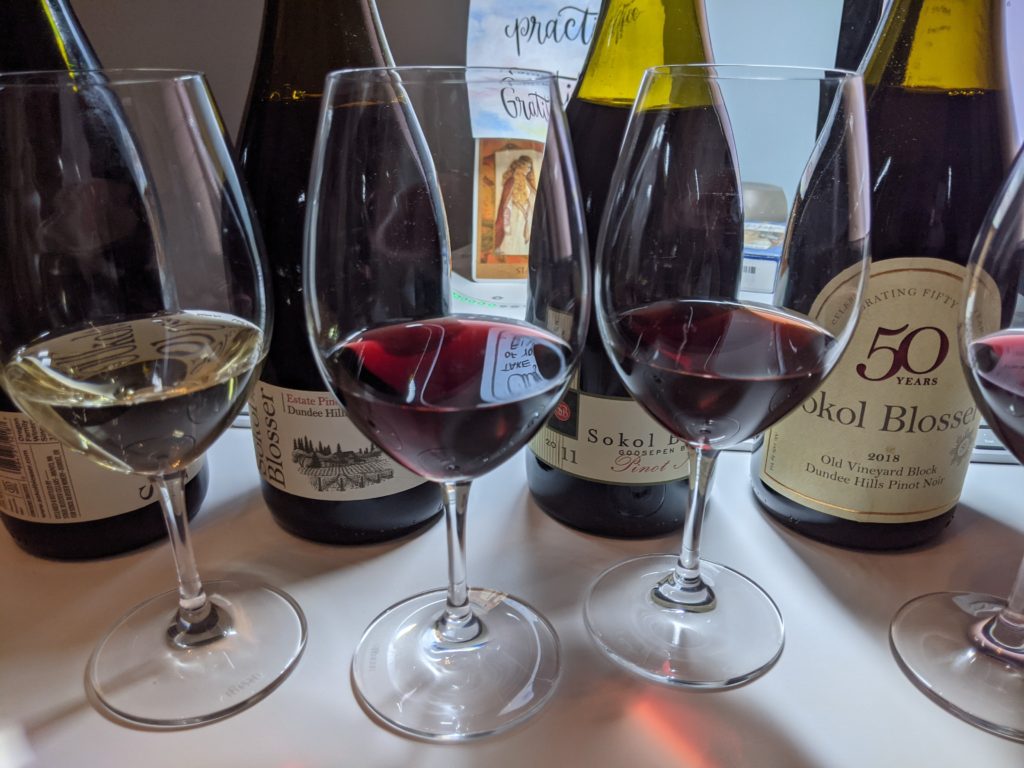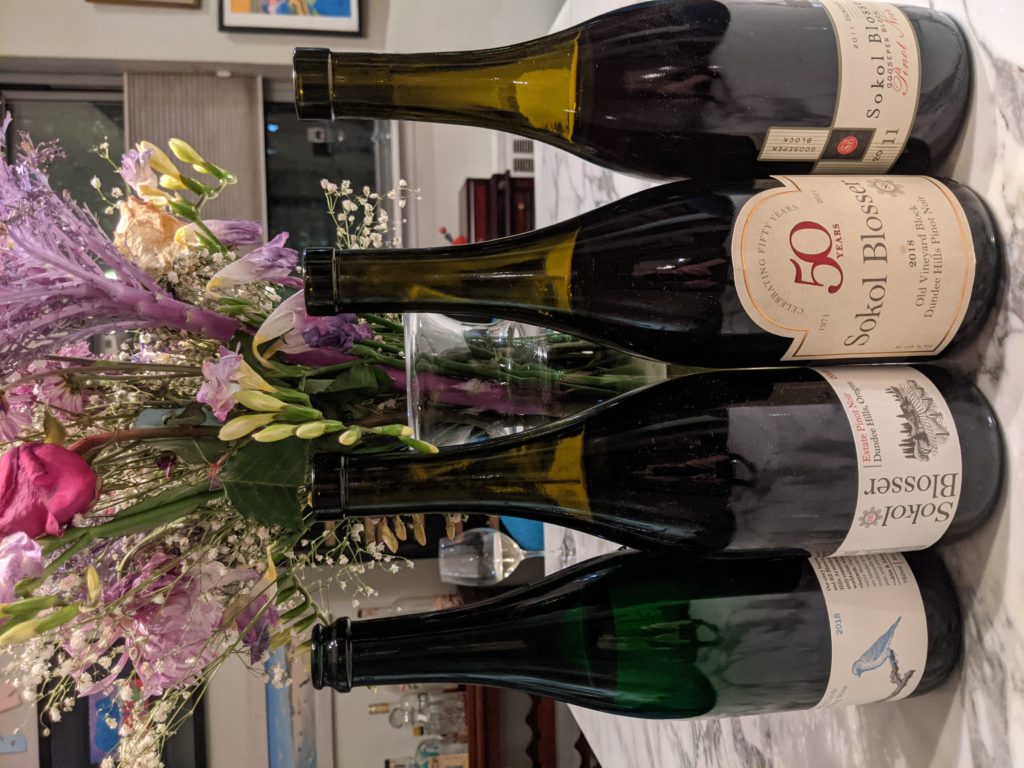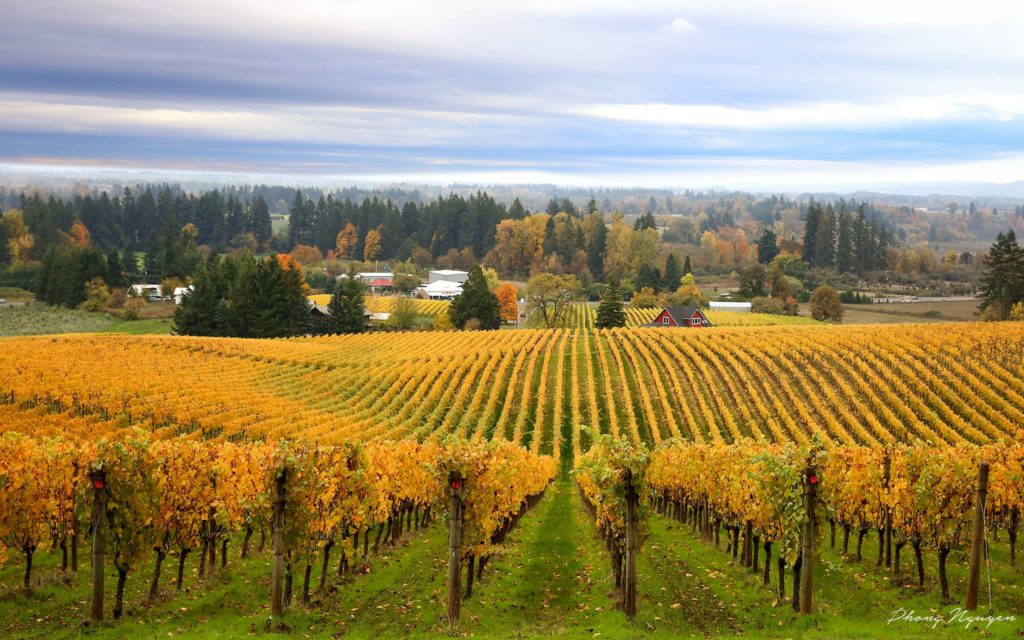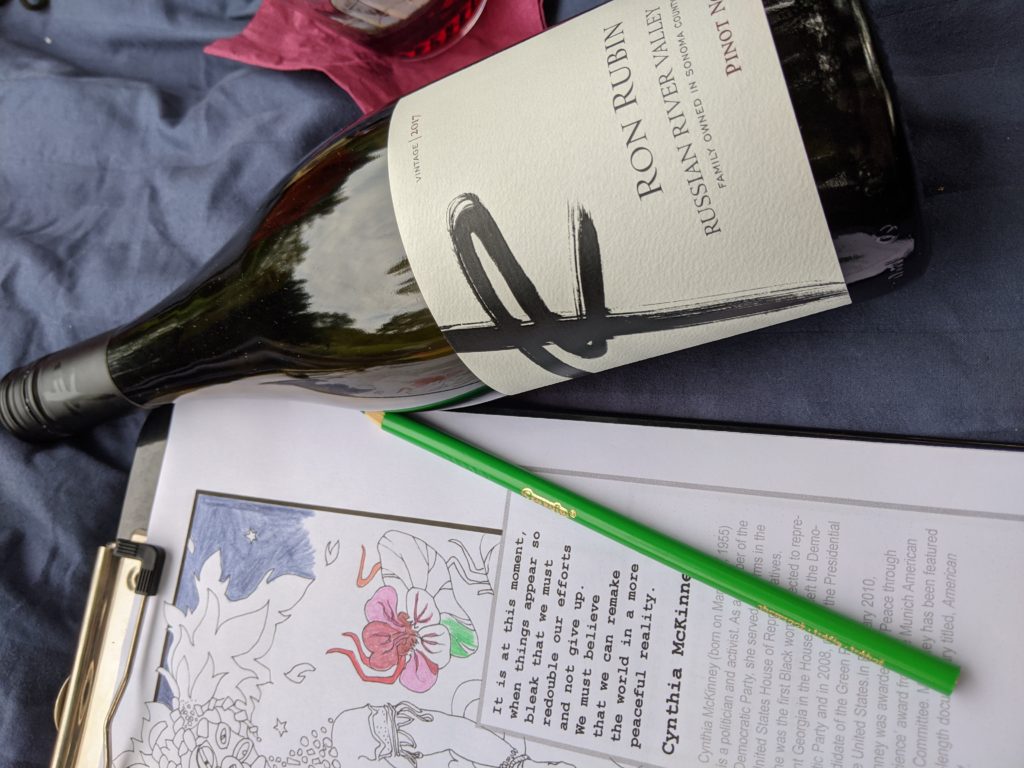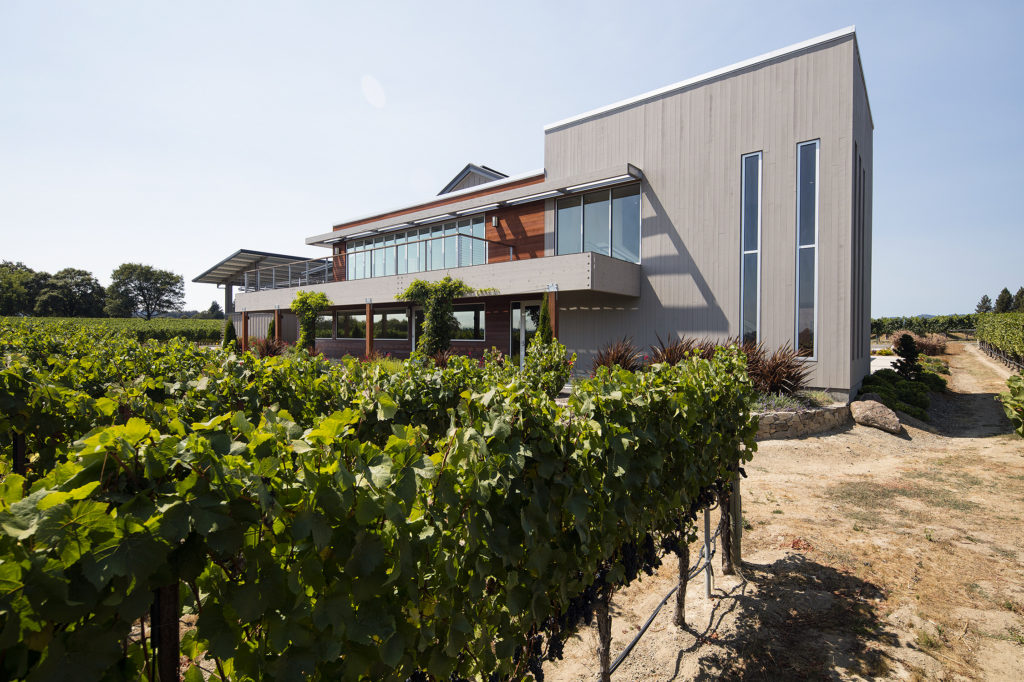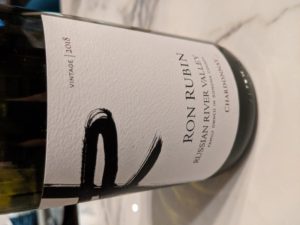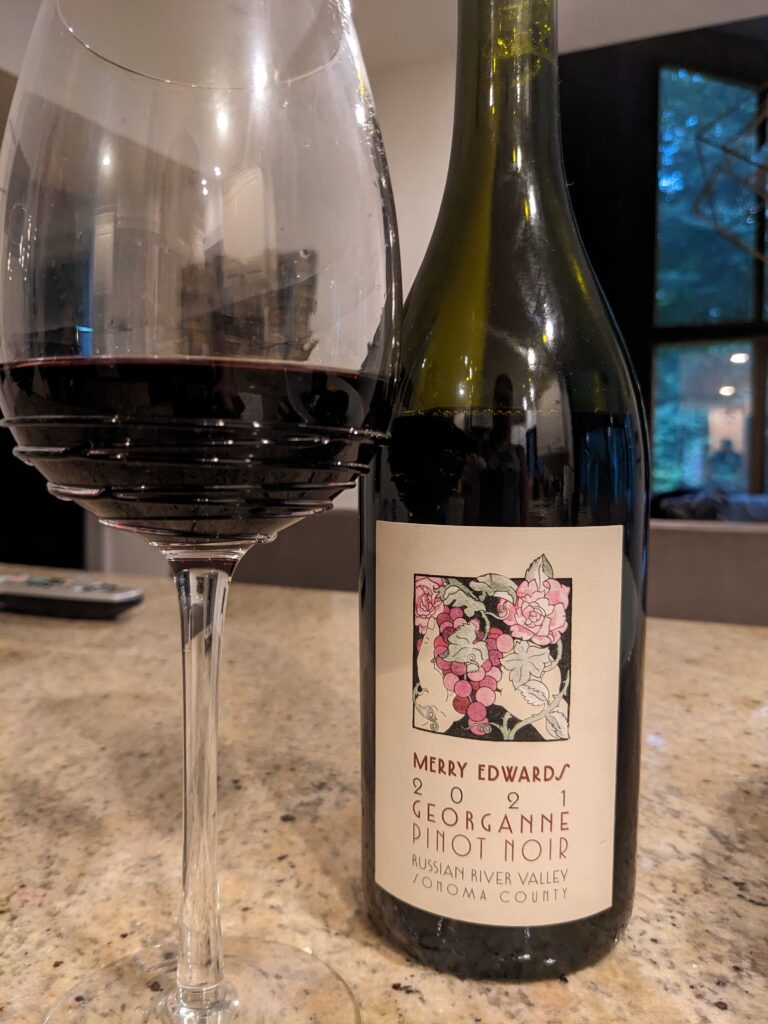
Each year, I have the good fortune to hear from the PR person who represents Merry Edwards Winery offering me the opportunity to taste through the current selection of releases. And, every year, I gratefully accept and yet somehow take months to drink through the wines. I am a diligent and dependable person who meets deadlines at the office and yet these bottles linger in my wine cellar for months. Case in point, I received this latest set of wines in late May and yet here it is mid-September and I have only just finished tasting the last of the wines this week. Why?
Why indeed? I gave this quite some thought as the item to taste (and then write) about these wines languished on my “to do” list month after month.
Well, for one thing, I generally prefer to taste these wines alongside a lovely meal, share them with friends and family or both. These are special wines that I truly enjoy drinking with good company, eager to give others the opportunity to taste them as well. In this regard, I sometimes wait for the “perfect” dinner or the “special” occasion rather than just opening them up on a random Tuesday with leftovers. And, while there is nothing wrong with this in theory, in practice it means that lots of time lapses in between tastings.
Recognizing this propensity in myself, I chose to adopt a different philosophy over the past two weeks. We are likely all familiar with the phrase “Life’s too short to drink bad wine,” but it is true in that life is too short… period. End of sentence. We should celebrate the time we have and enjoy it to the best of our abilities. For some (myself included), the price point on these wines means that you can only indulge in them occasionally, but really, while these are, indeed, special wines, they don’t require a special occasion or the perfect moment to drink them. Thus, in accordance with this new approach, I changed tactics and drank the last three bottles in close proximity to each other. I was now done with tasting and could move on to writing.
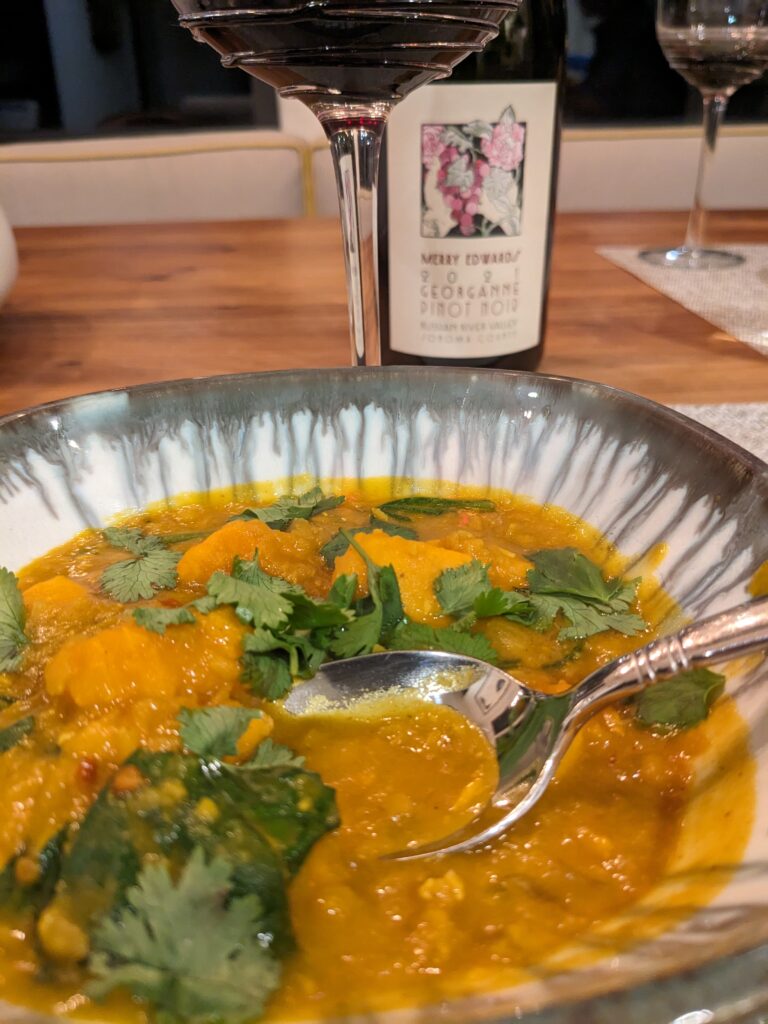
In this regard, I often write about the climate and soil of the vineyards where the grapes for these wines are grown (see here for previous stories), which is relevant given that five of the wines below are of the same grape variety and it is their distinct environment that sets them apart from one another and accounts for many of the differences among them. But, at the end of the day, it is what the wine tastes like in your glass that has the most meaning, irrespective of microclimates and soil types.
Thus, what is perhaps more important to you, the reader, is identifying the style of the resulting wine and equally critical, the set and setting in which one drinks it. We all have preferences for different styles of wine, all of which are valid. Taking time to savor the aromas and flavors, seeing how the wine develops in the glass over the course of one’s meal and simply being in a great frame of mind — whether alone or joined by others — all contribute to our enjoyment, much more so than the formality of the meal or day of the week.
So, here are my tasting notes for each of these wines, along with the set and setting (to the best of my recollection as I wasn’t planning on including that information). I hope you will find a style that appeals to your palate and seek it out to sip and savor as we celebrate this thing called life!
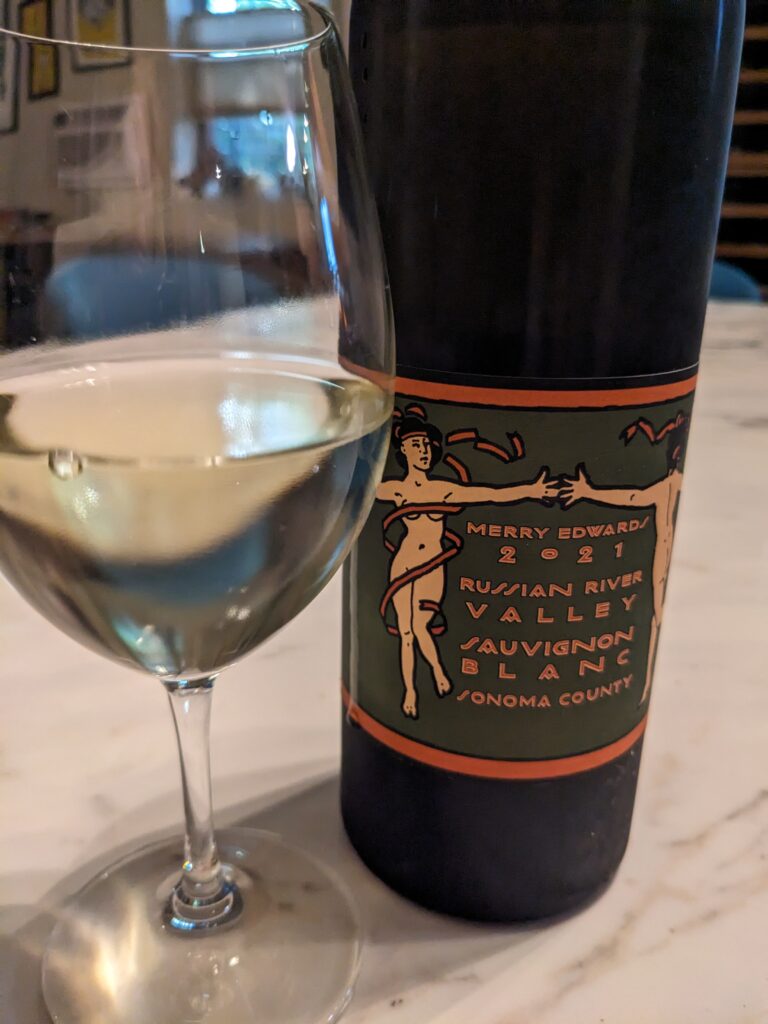
Merry Edwards Sauvignon Blanc
2021, Sonoma County (CA), USA, $48.00
Complex aromas of herbs, smoke, citrus/tangerine greet the nose and persist on the palate with vibrant acidity, medium+ body and long length. I opened up this bottle with dinner featuring tuna steaks on Monday, July 3 (the eve of the July 4th holiday) to celebrate the deep bonds of friendship that my husband and I share with our dear friend Gisela, all of whom greatly appreciated this wonderful wine.
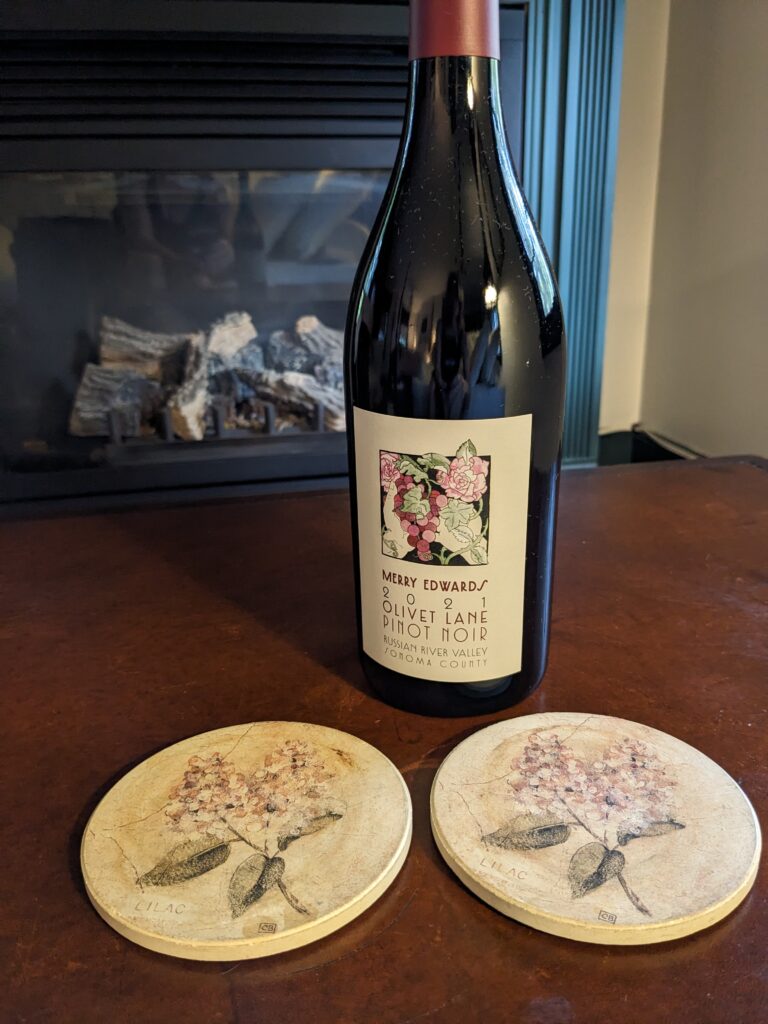
Merry Edwards Olivet Lane Pinot Noir 2021, Russian River Valley (CA), USA, $75.00
Redolent of ripe, dark cherries, herbs, cocoa and a hint of leather, this rich and robust wine was dry on the palate with bright acidity, medium+ body and very long length. My friend Rob and I spent the weekend of June 30-July 2 at the Riverwind Inn B&B in Deep River, CT and opened up this bottle to toast our weekend away, sitting on balcony and taking in the view of the property’s gardens.
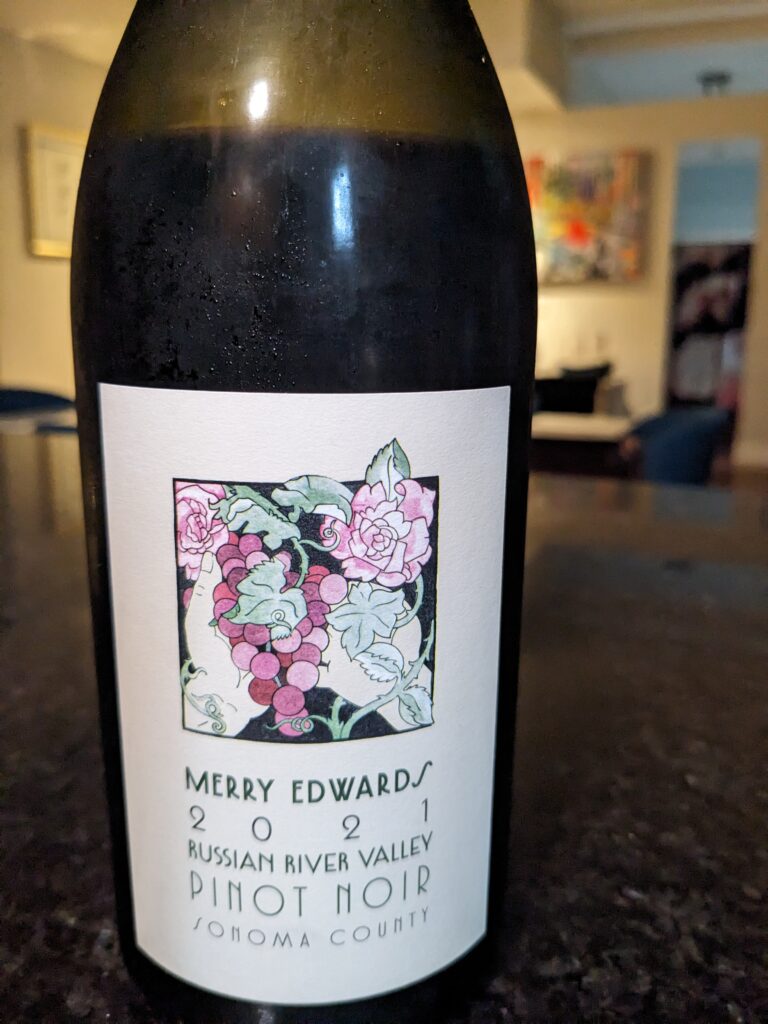
Merry Edwards Pinot Noir 2021, Russian River Valley (CA), USA, $65.00
Very herbal in character, this wine offers up plum and cherries, with notes of both fresh and dried herbs. The dry palate had medium acidity, medium+ body, noticeable yet ripe tannins and long length. While not deliberately opened up in honor of Bastille Day, I did enjoy this wine with dinner with my husband on Friday, July 14. I don’t recall what we ate, but we definitely loved the wine!
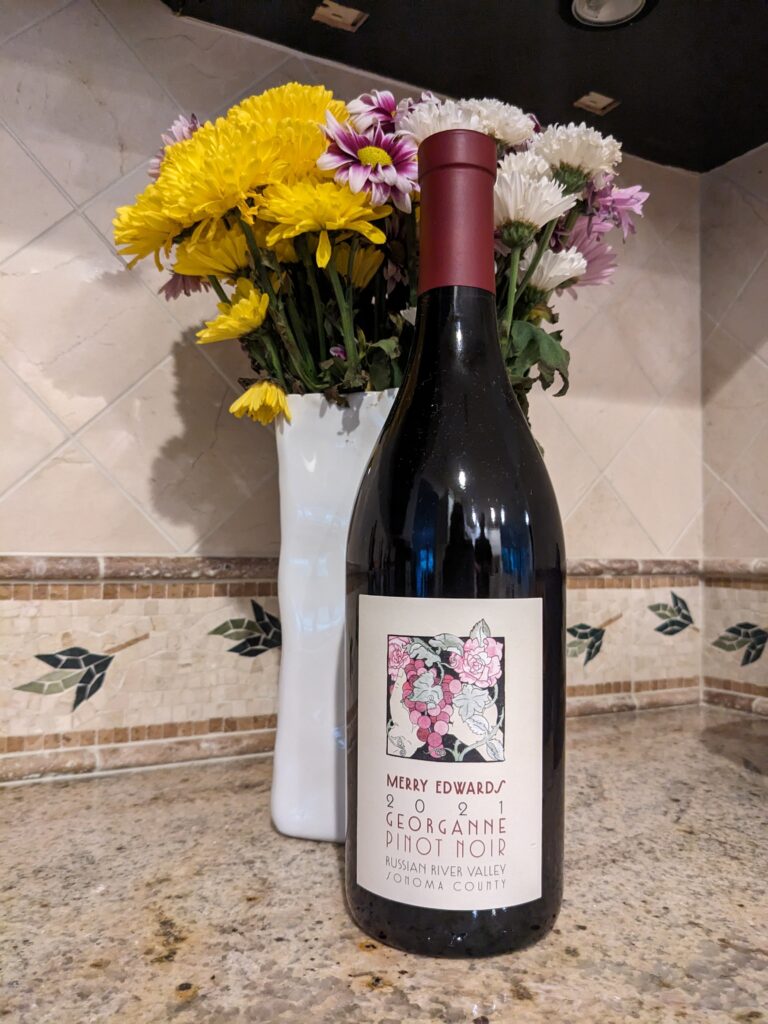
Merry Edwards Georganne Pinot Noir 2021, Russian River Valley (CA), USA, $70.00
This wine was more fruit driven than the others, but was still quite elegant, with dark cherry aromas and flavors and a slight earthy character. The palate displayed bright acidity, medium+ body and dusty tannins, culminating in long length. I shared this wine on Saturday, September 9 with my aforementioned friend, Rob, at his home in Stamford, CT where we collaborated on creating a delicious lentil and sweet potato dish from the New York Times (find the recipe online here). NB: Dish is pictured above.
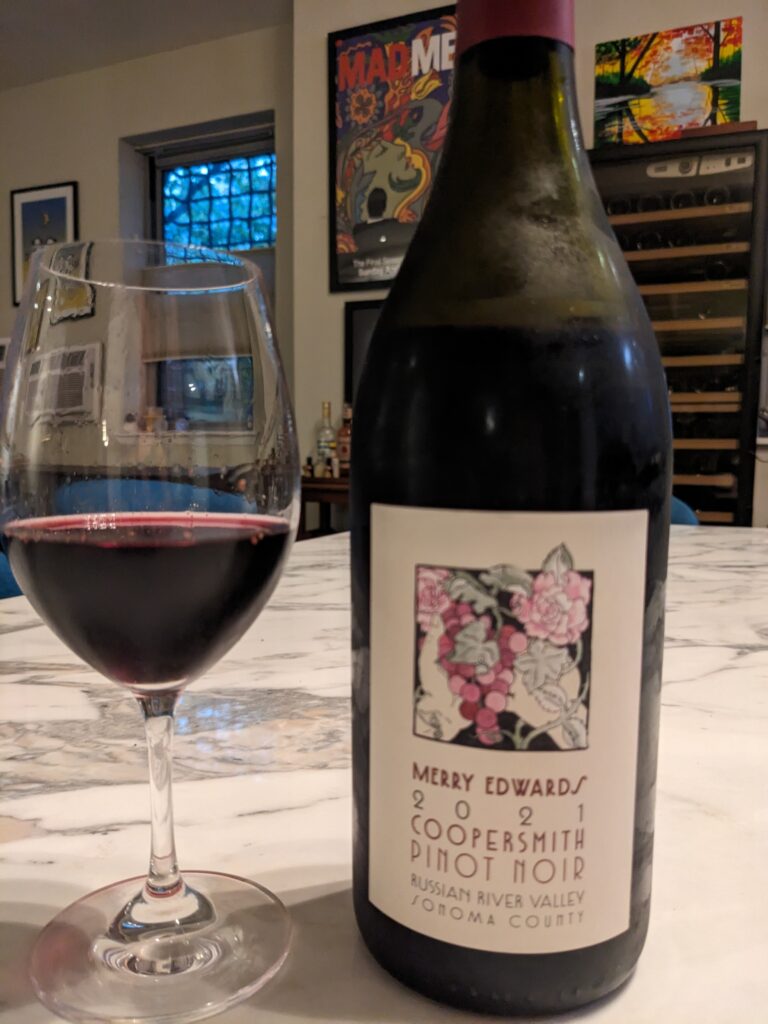
Merry Edwards Coopersmith Pinot Noir 2021, Russian River Valley (CA), USA, $70.00
This wine displayed floral aromas along with red and black cherries and berries on the nose and palate. It had good acidity, with medium body and long length. As a quiet moment before the hustle and bustle of the week ahead, my husband and I shared this bottle of wine over dinner (pasta with pesto sauce and parmesan cheese) on Sunday, September 10.
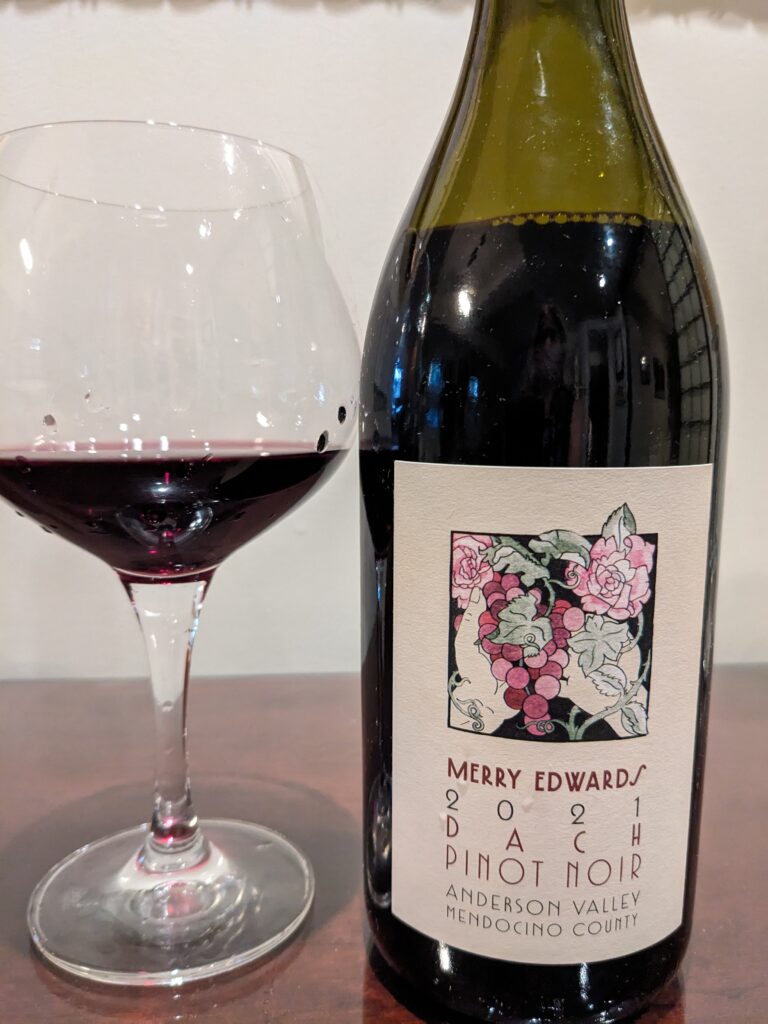
Merry Edwards Dach Pinot Noir 2021, Anderson Valley (CA), USA, $75.00
The most structured of the bunch, this wine provided a variety of aromas and flavors including herbs, dark red fruit and earth, with an herbal undercurrent. It had firm tannins, full body and long length on the dry, vibrant palate. While my husband was away for the weekend,
on Friday, September 15, I celebrated the end of my work week with dinner on my own, which consisted of yummy pork chops wrapped in bacon and rosemary and this beautiful wine. Then I continued to enjoy the wine as I binge-watched Glow Up on Netflix.

